


















Story by Brian Kim
When Randy Sim visited Seoul, South Korea, over winter break, the roads had been overrun by hundreds of thousands of protesters. Demonstrations have flooded cities in the months since former president Yoon Suk-yeol unexpectedly declared emergency martial law, sending the country into turmoil.
Sim, father of Austin (‘22), Gavin (‘24) and sophomores Bella and Olivia Sim, emigrated from Korea in 1974. Currently, Sim serves as a Director of the Council of Korean Americans.
President Yoon placed the country under military rule on Dec. 3 for the first time in 45 years, citing a need to “ensure the freedom and safety of the people” against “shameless pro-North Korean anti-state forces.” Six hours later, the National Assembly unanimously voted to repeal the motion.
On April 4, South Korea’s highest court unanimously removed President Yoon from office, effective immediately.
A special election will occur within the next 60 days.
When a country enacts martial law, it replaces civilian government with military rule while ceasing standard legal processes. In South Korea, there are two types of martial law: precautionary and emergency. While precautionary martial law is meant to preserve order, emergency martial law allows the restriction of civilian rights including freedom of speech, press and assembly — as well as enabling arrest without warrant in certain cases.
Yoon’s declaration came after the opposition Democratic Party of Korea announced a reduced budget bill and submitted several impeachment motions. Since Yoon’s inauguration in May 2022, the DPK pushed to impeach 22 government officials and prosecutors. Yoon claims the proposed budget and impeachment efforts were an attempt to protect opposition leader Lee Jae-myung, who faced criminal charges of his own until his acquittal on March 26.
Following the declaration, Army Chief of Staff and martial law commander Park An-su issued a decree banning all political activity and placing all media sources under government control. Troops and police officers encircled the National Assembly building, blocking representatives from entering. Lawmakers were forced to scale the walls to carry out the vote that ultimately revoked the martial law.
The ban on political activity also ordered the end of a doctors’ strike that began in February 2024, when roughly 90 percent of Korea’s junior doctors resigned in response to Yoon’s plan to sharply increase enrollment in medical schools.
During his first two years in office, Yoon struggled to enact his policies, due in part to a DPK-majority National Assembly. Moreover, several scandals hurt his public image, including recent accusations of influence peddling and corruption against first lady Kim Keon-hee.
Although most of Korea slept through the shortlived martial law, citizens continue to protest.
After his visit to Korea, Sim noticed that the demonstrations were surprisingly unintrusive.
“Everything was very peaceful, and the demonstrators looked like they were very well-organized. It didn’t have an aura of negativity,” Sim said.
Sim notes that South Koreans are used to the chaos and conflict. “If they hear about a missile

flying over, or defectors or gunshots at the DMZ, they’re just cool, calm and collected,” he said. “They’re used to things like that because of their proximity to North Korea.”
Others are more distressed by recent events. “I feel emotionally uneasy and a constant sense of anxiety,” said South Korean citizen Na Doe-sun, a St. John’s grandparent. “The political turmoil is undermining economic stability and clouding future prospects.”
Shortly after the declaration, the South Korean currency dropped 1.4% in value. The move also placed a strain on South Korea’s international relations. Foreign leaders and officials canceled visits to Seoul, while Korean diplomats cut short their international trips.
The United States, one of Korea’s most valued allies, publicly expressed disapproval of the declaration. The Combined Forces Command, a Korean-American military headquarters, exists to protect South Korea from outside aggression, particularly related to North Korea. Yoon’s decision to enact martial law without alerting the Command raised questions about the status of their alliance.
Politics should be conducted for the sake of the people of the country.
GRACE CHANG
Grace Chang, aunt of senior Rayna Kim, found the experience especially “unpleasant and unsettling” due to South Korea’s troubled history with martial law. First enacted in Oct. 1948 by Korea’s first president Rhee Syng-man, martial law became more common immediately after the Korean War. Leaders used it to wield autocratic rule and suppress anti-government movements rather than address real crises.
After the martial law was repealed, protests demanding its reversal swiftly turned to calls for Yoon’s removal. The DPK submitted an impeachment motion against him the next day, and the Korean Confederation of Trade Unions, with over a million members, declared an indefinite strike until Yoon stepped down.
Na noted, “whether martial law was justified or not is a point of contention that the current president and the opposition party are fiercely debating,” yet she agrees with the impeachment.
Chang, who lived through the martial law incident, found the conflict especially frustrating.
“Politics should be conducted for the sake of the people of the country,” she said. “However, because of the constant clashes between pro- and anti-government camps, it seems like the actual management of the country will become inadequate.”
Within the Korean-American community, Sim sensed that most people considered Yoon’s declaration as a desperate attempt to regain control of
the National Assembly. Yoon’s party, the People Power Party, split between defending and blaming the president. Leader Han Dong-hoon spoke in support of Yoon’s impeachment before he himself resigned due to growing divisions.
A small number of PPP members have continued to support Yoon, who defended his actions and promised a “fight to the end,” refusing to step down.
After a failed impeachment motion, Yoon was stripped of his presidential powers on Dec. 14. Police launched a treason investigation against Yoon, accusing him of blockading the National Assembly to prevent lawmakers from voting to lift the martial law. The prosecution revealed that Yoon ordered troops to “break down the door with an axe” and arrest the assembly members, stating that he could “declare martial law two or three times” if it were lifted.
Charges were also filed against Kim Yonghyun, Yoon’s Minister of Defense, who planned the martial law bid. Prosecutors alleged that he told troops at the National Assembly to keep the number of lawmakers inside below 150 to prevent a majority vote, emphasizing the arrest of DPK leader Lee, PPP leader Han and Speaker of the National Assembly Woo Won-sik.
Kim was arrested on Dec. 8, and police prevented a suicide attempt two days later.
Meanwhile, Yoon barricaded himself in his fortified compound in Seoul for weeks with hundreds of supporters guarding the gates outside.
After escaping an initial arrest attempt on Jan. 3, Yoon was detained by police on Jan. 15. He was released 52 days later by a ruling of the Seoul Central District Court that overturned his arrest.
In the ongoing criminal investigation, Yoon continued to deny the charges against him, restating his belief in democracy. He was indicted on charges of insurrection on Jan. 26. If convicted, both he and Kim could face life in prison — or even the death penalty.
“Although he’s made some serious mistakes like the martial law, I don’t think President Yoon is an evil person,” Na said. “Many of my acquaintances say that impeachment and detention were wrong.”
Following Yoon’s impeachment, Prime Minister Han Duck-soo served as acting president before also being impeached on December 27. Until Han’s reinstatement on March 24, Choi Sang-mok stepped in as acting president.
Now that Yoon has been removed from office, Na has a vision of how the nation can recover.
“A Korean leader must have the conviction to strengthen the alliance with the U.S. and overcome regional tensions while protecting democracy befitting Korea’s status as the 12th-largest economy in the world.”
Story by Genevieve Ederle & Amina Khalil-Zegar
Dentist Mona Khalil could have easily reinserted the front tooth of a 12-yearold girl who had been hit by a car. But the parents, fearing deportation, brought their daughter in too late — her treatment now required specialty work beyond Khalil’s expertise. And while Khalil would have been willing to do the work for free, the new procedure would be far more costly for this uninsured family.
“As a provider, that situation really struck a chord,” Khalil said. “It is a shame that any human should be scared to go to the doctor or be in such a vulnerable situation.”
Khalil said she fears such situations will become commonplace with the implementation of the Trump administration’s new immigration policies. As president, Donald Trump has already signed more than 100 executive orders — interfering not just with immigration protocol but also with other facets of the government.
With directives ranging from U.S. withdrawal from the World Health Organization to dissolving Diversity, Equity and Inclusion initiatives, Trump has already begun to leave his mark.
One of these orders, on his rst day in o ce, established the much maligned Department of Government E ciency. The aim of DOGE was supposed to modernize federal technology and increase e ciency, according to the o cial White House website. But in reality, the Elon Musk-led initiative has laid o thousands of federal workers, has frozen grants to international Fulbright scholars and has begun dismantling State Department programs (including USAID) as well as eliminating the Department of Education.
Jerry, a federal employee who requested anonymity, told the Review he is skeptical that Trump’s executive orders will actually improve government e ciency. In fact, his legislative
branch agency is tasked with the same work: investigating federal programs and agencies to evaluate their productivity.
“That may sound like DOGE on the surface, but unlike them, we’ve been around for more than 100 years and work methodically for Congress in a nonpartisan, fact-based manner,” Jerry said.
Jerry’s agency continues to operate without layo s or hiring freezes, but Trump’s executive orders still hit close to home.
It is a shame that any human should be scared to go to the doctor or be in such a vulnerable situation.
MONA KHALIL
“Things are bleak at the Department of Education,” Jerry said. Amid reports of the White House’s plans to shut down the department entirely, they recently announced that they are laying o nearly 50% of their workforce.
According to Jerry, dismantling the Department of Education would further encourage ICE raids on public schools and a ect millions of low-income and disabled students.
Jerry previously worked at the Department of Labor in the O ce of Federal Contract Compliance Programs. The agency is tasked with enforcing a Civil Rights-era executive order combating discrimination in government contracts and investigating claims of employment discrimination based on race, religion, color, sex or national origin.
Lyndon B. Johnson signed the order in 1965 to broaden the requirements of the Civil Rights Act
Students grapple with the history of the recently renamed Gulf of Mexico
for federal contractors. “After 60 years, President Trump rescinded that order,” Jerry said.
Marguerite, a pediatric infectious disease physician in Houston, has also witnessed the e ects of Trump’s orders.
“I am aware of investigators who have had to change the wording of grants being submitted to remove content that violates executive orders,” Marguerite said. Words such as “trauma,” “barriers” and “equity” are being removed by researchers in order to avoid getting agged by federal grant funding agencies.
Jerry also condemns the Trump administration’s decision to slash jobs from the federal workforce, a policy that he says will not just reduce government e ciency but also discourage would-be applicants from pursuing careers in public service.
“The federal government has long struggled to attract young talent, as less than 9% of the federal workforce is younger than 30, and the current instability and hiring freezes will only make that worse,” Jerry said. “Our government needs bright, decent public servants now more than ever.”
Despite the current administration’s vili cation of government employees, Jerry emphasizes that these workers are often both highly educated and idealistic.
“The professionals I’ve worked with throughout the federal government are overwhelmingly smart, good people who have devoted their lives to serving their country with integrity,” Jerry said.
“It is both alarming and disheartening to see the president and his political appointees go after these devoted public servants, and it absolutely harms morale.”

When Mateo Ramirez-Valentini heard about the executive order that renamed the Gulf of Mexico as the Gulf of America, his initial reaction was disbelief. After considering the motivation behind the move, the Latinos Unidos A nity Group co-president became concerned.
“Trump is doing such ridiculous things with his power,” Ramirez-Valentini said.
On Jan. 20, President Donald Trump rescinded 78 executive orders signed by former President Joe Biden and signed 26 of his own — the most of any president on Inauguration Day.
One of these executive orders, “Restoring Names That Honor American Greatness,” directed the Secretary of the Interior to rename the Gulf. Trump cited a need to celebrate the “extraordinary heritage” of the United States and the Gulf’s “pivotal role in shaping America’s future.”
Although a Marquette University poll showed that 71% of American adults did not approve of the renaming, junior Bryanna Micu, who sees the Gulf of America as a more inclusive label, supports the change.
“My perspective shifted because of my Spanish class. Whenever we read Spanish works that mentioned America, it referred to the continents of North and South America as a whole,” Micu said.
The name “Gulf of Mexico” rst appeared on Spanish maps in the mid-1500s to honor the Mexica people, the founders of the Aztec Empire. Since then, it has served as a key symbol of Mexico’s origins.
“It’s important to recognize that it’s still the same body of water. Just because it changed names doesn’t mean it plays any less of a role in Mexican history,” Micu said.
Amid these changes, news organizations including the Associated Press have announced their decision to continue using “Gulf of Mexico” to keep the body of water recognizable worldwide. Trump retaliated by limiting the AP’s access to his major events and speeches, contending that the Associated Press refused to follow the law.
Unlike these news agencies, Google and Apple Maps updated their platforms for American users to re ect the name change. Meanwhile, Mexican president Claudia Sheinbaum wrote a letter to Google, requesting that the Gulf retain its original name because it is an international body of water.
“I don’t think anyone should have that much power to rename something like that,” Ramirez-Valentini said. “It’s scary how quickly these changes can be made.”
Two weeks after the directive, Trump proclaimed Feb. 9 as Gulf of America Day while on the way to New Orleans, describing the holiday as a way “for our great Nation to come together and commemorate this momentous occasion.”
“It’s really consistent with his mission to celebrate American nationalism,” History Department Chair Russell Hardin said. “It gives those who support him a sense of national pride.”
In the same executive order, Trump announced that Alaska’s highest peak Denali would be changed back to Mount McKinley and Fort Liberty
in North Carolina changed back to Fort Bragg. Denali, meaning “the high one,” comes from the Denaakk’e language spoken by the Alaskan Koyukon people. Former President Barack Obama originally relabeled the monumental summit in 2015 to recognize these native people, earning praise from the Alaskan governor and congressional delegation.
Trump sees the name reversal as a tting way to honor 25th president William McKinley, whom he regards as a “natural businessman” who made the “country very rich through tari s and through talent.”
Fort Bragg, originally named after Confederate General Braxton Bragg, was renamed to Fort Liberty in 2023 as part of a movement to erase titles honoring Confederate leaders. The reversal now honors World War II paratrooper Roland Bragg. Ramirez-Valentini considers Trump’s move a ploy to expand his power and spread nationalism.
“Names carry so much meaning, and he’s trying to strip them away,” Ramirez-Valentini said.
“Trump is spreading a viewpoint that only serves certain groups of people.”
Hardin argues that the disagreement over the urry of renaming is re ective of an increasingly polarized society.
“The majority of the world and cartographers are going to continue to label it Gulf of Mexico,” Hardin said. “If someone refers to the Gulf in that way or says ‘Denali’ out of respect for world cultures, is that a tell to their political leanings?”
Story by Lily Feather
Photo by Georgia Pulliam
In March, Review and Quadrangle adviser
David Nathan was honored by the Columbia Scholastic Press Association as a Special Recognition Adviser. Though most students know Nathan from his 15 years of advising student publications, his background as a birthday party clown, game show contestant and baseball writer is much less well-known.
When he was 13, Nathan scored the best gig at Galveston’s Sea-Arama Marine World: suiting up as the park’s mascot, Cap’n Sharky. To fully embody the costume character, who wore an oversized pirate hat and eye patch, Nathan would make dance mix tapes, put on his Sony Walkman and dance in front of the park like a mascot at a sporting event.
During Nathan’s senior year of high school, he worked at a party store at the Galvez Mall, where his boss asked him to ll in as a birthday party clown. “I was like, sure, because I’m a theatrical sort,” Nathan said.
Nathan’s clown persona, called Choo-Choo, was a train conductor. He performed magic tricks and used a hand pump to blow up and tie balloon animals, including a dog, octopus and mosquito.
“I’ve always told people that I used to be a clown,” Nathan said. “And, of course, the punchline is that every student says, ‘Used to?’”
Nathan assured this reporter that there are no surviving photos from this period.

time Cable Network. They decided that “any idiot could win on this show,” in which contestants answer trivia questions and race to grab grocery items from the store shelves.
“We were just foolish enough to try out,” Nathan said.
When they walked out of the audition, they knew they had nailed it, and sure enough, they were invited to be on the show the next week.
After a full day of lming, they swept the whole thing, winning $2,950 each. Three years ago, English teacher Clay Guinn gifted Nathan a replica of the “#1” shirt that Supermarket Sweep winners wear. Watching Nathan on “Supermarket Sweep” made fellow Review adviser Shelley Stein (‘88) “realize what he was all about. He’s super fun.”
transplant. Because she had an unusually high number of antibodies in her blood, doctors were unsure whether they would be able to nd a match. Mandy was prepped and waiting for the transplant in the hospital for almost six months. During that time, Nathan even snuck an unauthorized refrigerator into her room.
After months of uncertainty, a potential match was identi ed. “The scariest part is when they actually have the heart,” Nathan recalled.
Doctors do not know if a heart is viable for transplant until they examine it. Fortunately, Mandy’s doctors were able to proceed. Afterwards, they told Nathan that his wife had a 1-in-5,750,000 chance of nding a match.
O CAP’N! MY CAP’N! In high school, Nathan worked as Cap’n Sharky at Sea-Arama Marineworld in Galveston.
His journalistic career began in high school when he wrote movie reviews for the school newspaper without actually taking the journalism class or being on the newspaper sta . At the end of his junior year, the newspaper adviser asked if he would like to be editor-in-chief. When Nathan asked why, she responded that Nathan was the only student who knew how to write.
“I had all my friends join the paper senior year, and we took that thing over and turned it from this absolute nothing paper to what was, at least for our school, kind of a big deal,” Nathan said.
After writing for the Rice Thresher in college, he moved to Los Angeles and wrote for The Hollywood Gazette. “It was a complete rag,” Nathan said. “My articles always appeared right before or right after the articles on UFOs.”

While in L.A., Nathan received mail and phone calls intended for “the other David Nathan,” a British entertainment writer living in the area. Nathan was not surprised to learn that someone else shared his name, as he was part of a Facebook group called “Will The Real David Nathan Please Stand Up?”
One day, Nathan and one of his roommates were ipping channels and came across the game show “Supermarket Sweep” on the Life-
It was more than an English class. Mr. Nathan was born to entertain.
CAROLINE CHIAO
According to Stein, Nathan is the kind of person who will always cover for a friend. “If I have to leave a half hour early, he’ll come sit in with my French class and make bad French jokes,” she said.
With the winnings from the game show, Nathan had the time to write his rst book, “Baseball Quotations,” consisting of “thousands of historical and hysterical quotes about baseball.” He spent hours each day researching at the Olympic Branch Library, a sports library established after the 1984 Olympics.
Back in Texas, the Houston Post covered the release of the second edition of “Baseball Quotations,” including a photo shoot at a local bookstore. Nathan assumed the article would run in the sports or entertainment section, but it was eventually relegated to the business section. The writer explained that the photo had accidentally captured an image of a book in the sports section with a scantily clad female bodybuilder on the cover.
“It has taught me as an adviser that photos are important,” Nathan said. “And if you have bad visuals — or no visuals — chances are you’re going to wind up below the fold in the Saturday Business Section.”
Nathan wrote a third and nal edition of “Baseball Quotations” in 2011.
In 2019, he teamed up with former St. John’s college counselor Nick Accrocco to write “Achieving Admission,” a guide to the college admissions process. Nathan hired Review editors to design the cover and provide humorous illustrations. Nathan cut back his newspaper advising hours in 2019 when his wife Mandy required a heart
“After that, you kind of divide your life into pre-transplant and post-transplant,” Nathan said. Nathan and Mandy met in junior high school and started dating in eleventh grade. Mandy says that Nathan was one of the “cool kids” in middle school. After dating throughout college and doing long-distance for a few years, they tied the knot in 1991. They have two sons, age 27 and 25.
For Nathan’s 50th birthday party, which was held at a downtown arcade, Mandy prepared a trivia game called “How Well Do You Know David?” His family, friends and colleagues from St. John’s all participated.
Besides publications, Nathan teaches two senior English seminars: Counterculture Classics, which focuses on the Beat Generation, and Almost Famous, which centers around fame in novels and popular culture. In his senior classes, Nathan institutes “the Nirvana theory: Here I am now, entertain me — cast o the shackles of the ve-paragraph essay.”
For years, Nathan assigned his students a project in which they had to write a letter to a celebrity and ask for a signed photo. Nathan participated in the project himself, adding to the many signed pictures that covered the walls of his classroom, including discrete sections for athletes, comedians and actors. Many of the public gures students contacted wrote back as well, including, to Nathan’s surprise, former Cuban president Fidel Castro.
One year, Nathan wrote a letter to author Chuck Palahniuk. He received not only a signed, rst-edition copy of “Fight Club” and a shoutout on Reddit, but also a box full of knicknacks including a skull-shaped bank and a box of Cracker Jacks. Palahniuk even made Nathan a necklace of colorful stones collected on his journeys and inscribed it with Nathan’s initials.
Senior Caroline Chiao, who took Nathan’s Counterculture class, appreciated the class’s free-form structure. “It was more than an English class,” she said. “Mr. Nathan was born to entertain.”

When Lily Dunlap discovered she had cancer, her rst concern was not the painful chemotherapy treatments or the exhaustive recovery process. She was worried about breaking the news to her close friends and family.
“I was just thankful that it happened to me and not somebody else that I cared about,” she said.
Resilience has always been a de ning trait for the junior. When she was younger, Dunlap had trouble hearing, which doctors believed was a temporary e ect of frequent ear infections. When her hearing failed to improve, her parents grew concerned.
One evening, as she sat in front of the television watching “Mickey Mouse Clubhouse,” the fouryear-old begged her mother to turn it up. Even at maximum volume, Dunlap still struggled to hear more than sti ed sound.
Shortly after, Dunlap was diagnosed with moderate bilateral sensorineural hearing loss.
“I have no idea how that happened,” she said. “Technically, I passed my hearing test when I was born.”
Dunlap quickly grew tired of incessant questions about her hearing loss from classmates: “I kind of hated it.” Eventually, she learned to lipread and grew accustomed to her hearing aids.
Dunlap’s younger brother Joshua was also diagnosed with genetic hearing loss at birth. Aided by her own experience, Dunlap helped him adjust.
Dunlap describes her family as close-knit but competitive, listing family game nights as one of her favorite activities.
“I show no mercy,” Dunlap said. “But I’m also very family-oriented.”
Heading into her sophomore year, Dunlap anticipated a routine year lled with workouts, basketball practices and hangouts with friends. But by the end of the school year, she had uncharacteristically fallen ill four times and noticed a lump on the left side of her neck. She knew something was wrong.
Her pediatrician said the swollen lymph node was a product of her frequent illness. Even after the hopeful
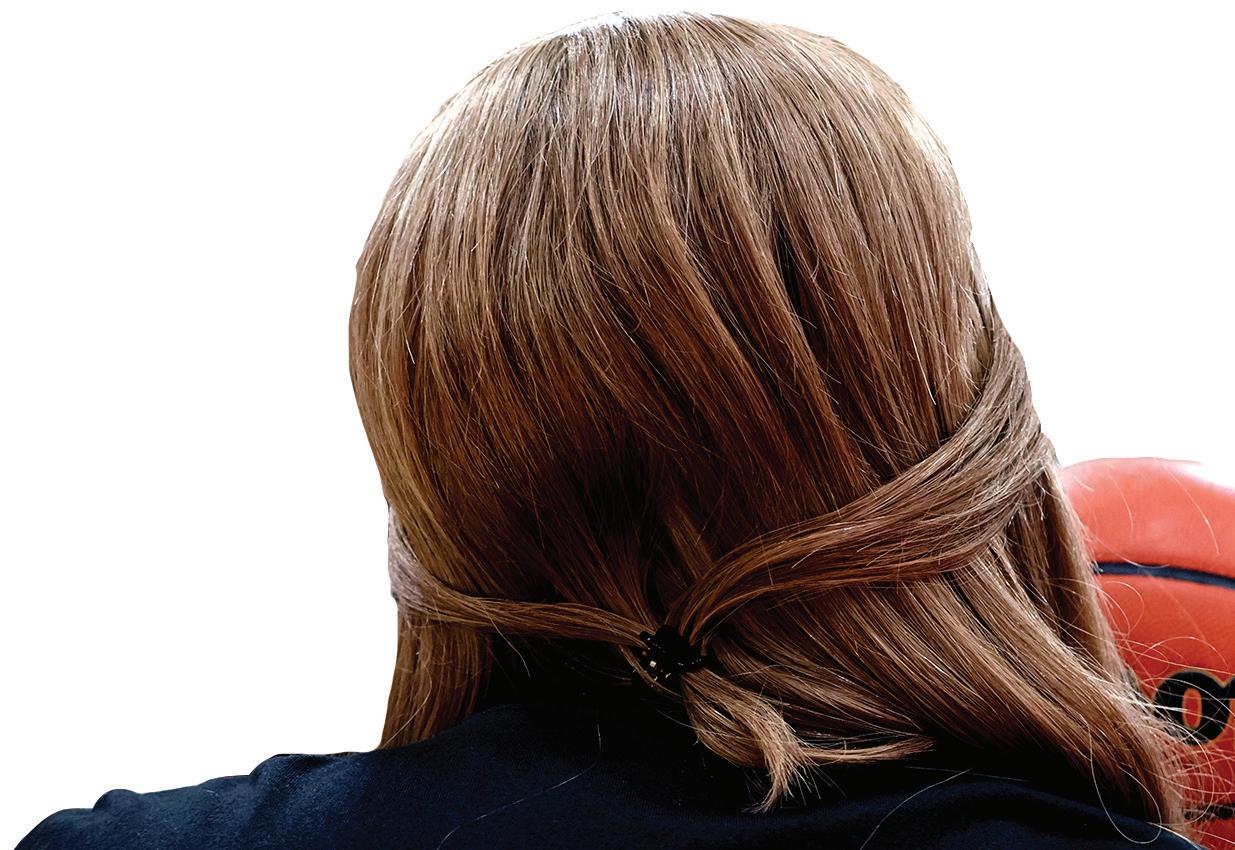
sis, Dunlap still had doubts. A few months later, after seeing no improvement, she returned to the hospital, where the doctors ordered a scan. The results were inconclusive, prompting her physicians to schedule an incisional biopsy two weeks before nals.
As she awaited the biopsy results, Dunlap played in a tournament with her club basketball team. When she got home, her parents informed her that she had Stage III Hodgkin’s Lymphoma.
“I was in denial,” she said. “But in my gut, since February, I knew.”
After two rounds of chemotherapy, her hair fell out and she was unable to participate in large gatherings.
For Dunlap, cancer was about loss. Her weakened immune system also meant she was advised against attending church, which had been a constant since childhood.
I was losing my hair. I was losing my endurance and strength. So I had to enjoy the little moments and stay positive through it all.
LILY DUNLAP
“I’m a very faithful person, but my doctor actually said that I shouldn’t attend,” she said. “She doesn’t know this, but I still went to church every Sunday.”
Since she was unable to attend camp that summer, Dunlap could not become a counselor in-training. Although her campmates sent her weekly letters, she still felt isolated. With both her siblings at summer programs and her friends out of town, the hardest part of battling cancer was solitude.
Loss gave way to gratitude.

How Lily Dunlap beat cancer and returned to the game she loves


Story by Eshna Das & Bella Dodig

were very accommodating if I had to wear a mask or go outside,” Dunlap said.
Dunlap’s mother, Colleen, who was diagnosed with breast cancer in April 2018 and completed treatment in March 2019, supported Lily throughout treatment.
“It was really critical,” her mother said. “I had seen the rodeo before, so I was grounded in the process that I went through myself to get a diagnosis. I was able to empathize with her but also be calm.”
By supporting Lily during the recovery process, she wanted her daughter to know that cancer should not become a de ning factor.
“She saw me live through it and saw that I tried to continue to do the things that were really important to me. I tried to encourage her to do those same things, telling her that although cancer is a huge part of your life right now, it doesn’t de ne who you are as a person.”
On Oct. 29, Dunlap had her last chemotherapy appointment. Later, on Dec. 14, family, friends and hospital sta celebrated as she rang the bell, signaling that she was cancer-free.
“As a person of faith, I can only say that it was God’s hand bringing us to the other side of this,” Dunlap’s mother said.
As early as July, Dunlap had set a goal: play against her sister Allison in the game between St. John’s and St. Francis Episcopal School on Dec. 10. For Dunlap, the only way she could prove she had beaten cancer was “by actually playing basketball.”
Dunlap began playing at age 5. She settled into the shooting guard position and quickly became known for her three-pointers. Dunlap was initially placed on JV as a freshman but was moved up to varsity just two weeks into the season.
When she nally returned to the court after ve months of treatment, Dunlap struggled to keep up with her teammates.
“We would do drills, and I’d be dying at the end,” she said. “But I was trying to pretend I wasn’t because the rest of the team was never as exhausted as I was.”





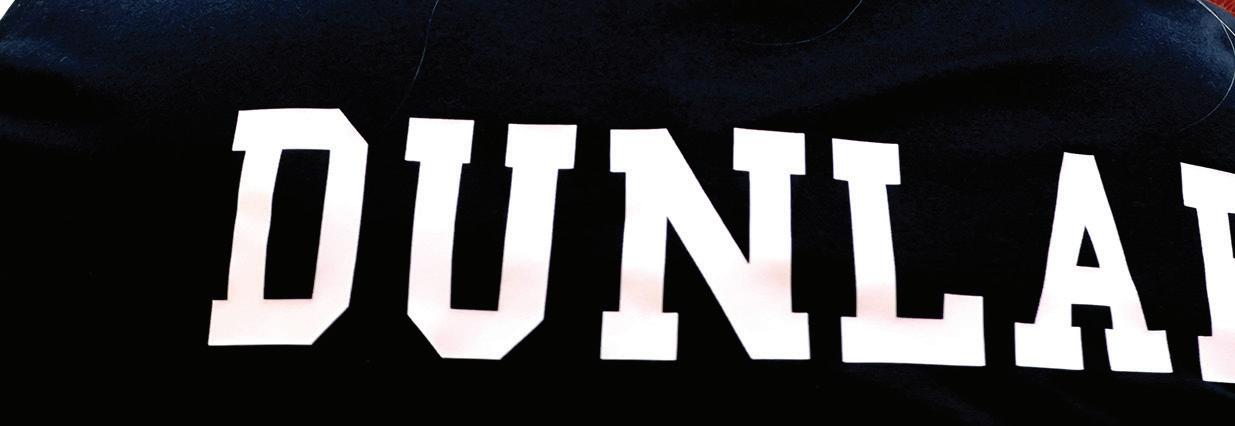

her frequent illthe hopeful diagno-
“I was going through a lot of loss. I had some friends who weren’t great. I was losing my hair. I was losing my endurance and strength,” she said. “So I had to enjoy the little moments and stay positive through it all.”
During her arduous treatments, Dunlap was also prohibited from exercise, with doctors setting a limit for her heart rate at 180 bpm — just walking up the stairs for her produced a rate of 170.
Eliza Dorros, one of Dunlap’s classmates and closest friends, was inspired by her resilience.
“You could see the amount of dedication she had. The second she was able to go back to working out and being active, she went back,” Dorros said.
Throughout treatment, Dorros, along with a few of Dunlap’s other close friends, worked to include her in group activities. In July, Dunlap took a trip with junior Madelyn Bass to her family home in Nantucket, Massachusetts.
“When my friend group would hang out, they
While she was recovering, Dunlap attended every game, guiding and supporting her teammates from the sidelines. Her teammates dubbed her Coach Dunlap.
At the St. Francis game, head coach Kathy Halligan rewarded Dunlap’s dedication, playing her for 10 minutes. During the second quarter, after missing her rst shot (“I was fouled”), Dunlap received an inbounds pass from captain Avery Peakes and made a step-back three-pointer. The entire gym erupted in cheers as Coach Halligan watched with pride.
“We knew she was back.”
For an extended version of this article with additional photos, please go to the Review Online, sjsreview.com.















‘I’m still here.’
Salvador Aquino worked hard for his chance at the American Dream. After joining the facilities team, his daughter and wife soon began working at St. John’s. Then tragedy struck.
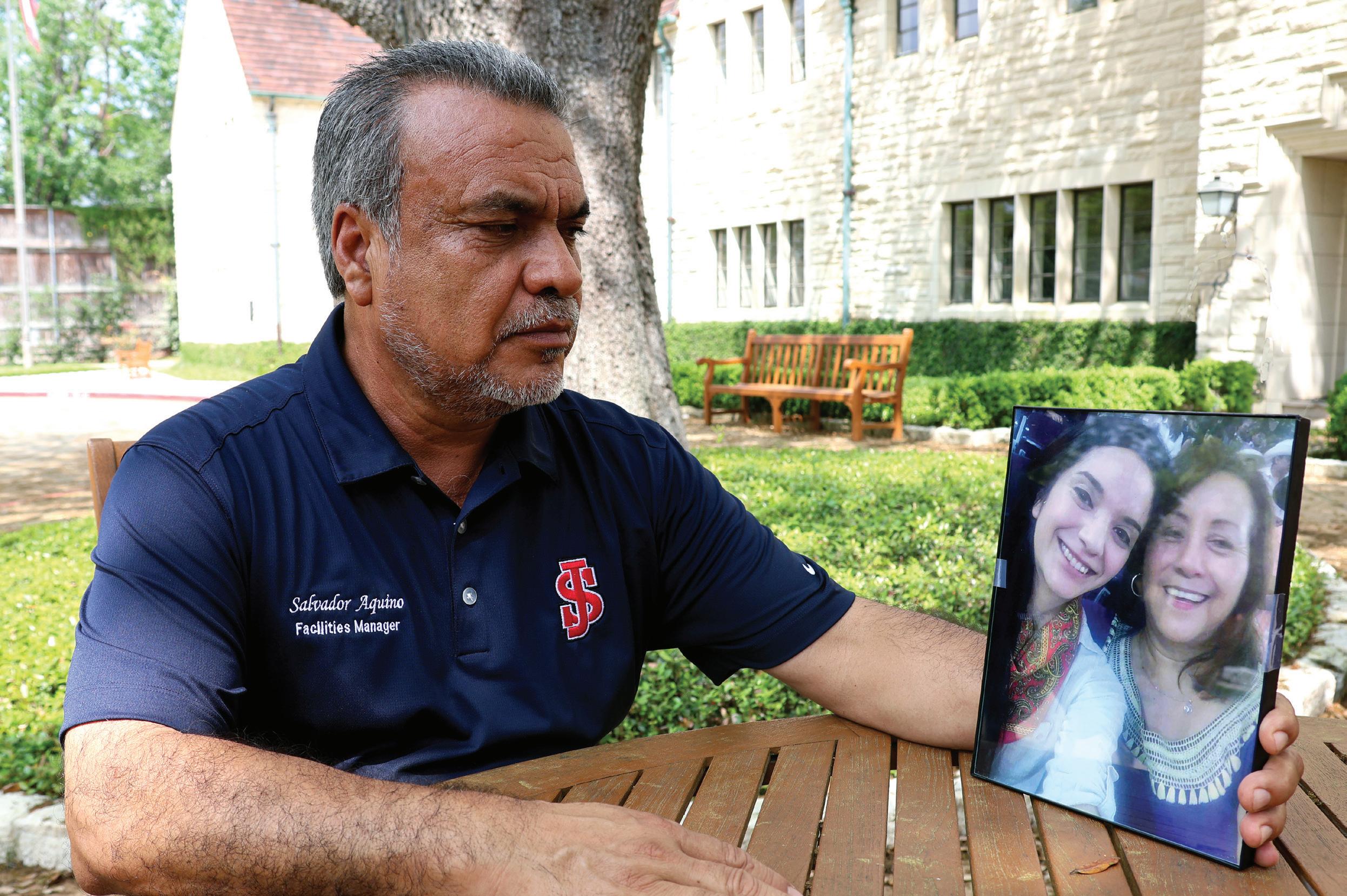
Salvador Aquino understands loss. He began working on the St. John’s facilities crew in 2014. A few years later, his daughter Brenda came to work as a campus events coordinator, and his wife Isabel began working in the cafeteria.
Isabel would drive in early for her shift in the kitchen, with Aquino arriving a few hours later. Brenda would come either from her apartment or after her classes at the University of Houston ended.
Aquino shared an office with his daughter in “the shop,” the building behind the outdoor concessions stand by Skip Lee Field, and they would see Isabel in the cafeteria. Whether at home or at work, the family saw each other constantly.
In 2018, Brenda died of the flu at age 26. With a mortality rate of less than one-fifth of a percent, she was one of around 2,255 people between the ages of ages 18 and 49 who passed away due to influenza-related complications that season.
“She wasn’t here very long, but she made a huge impact,” said Richard Still, the School’s Director of Safety and Facilities. Still believes Brenda’s “giving heart” came from her father.
“Good people come from good people,” Still said.
In 2018, the School honored her legacy by creating the Brenda Aquino Award, presented annually to a freshman who shows the greatest potential for growth in service and leadership.
Two years later, Isabel died after being misdiagnosed and treated for the wrong type of cancer. By the time doctors realized their mistake, she was too weak to receive the necessary treatment.
“A part of my life went with [Brenda] and another part with my wife,” Aquino said. “But I’m still here.”
With the memory of his wife and daughter still present around campus, Aquino feels grateful for the time he was able to spend with his family at St. John’s. “They are with me every day,” he said.
“I know they’re waiting for me on the other side.”
For people learning to live with grief, Aquino suggests looking at the process one day at a time and accepting the situation in order to maintain a sense of gratitude. “A lot of people will tell you,
‘Oh no, it’s okay,’ but it’s not okay because people don’t feel the same things that you feel,” he said. Born in Piaxtla, Mexico, in 1964, Aquino immigrated to the U.S. when he was 17, hoping to eventually join others who had moved to New York City from his hometown.
“I wasn’t planning on coming to Houston,” Aquino said. “I said, wherever this train takes me, I’ll get there.”
Dropped off near Victoria, Texas, Aquino hitchhiked to Houston and lived on the streets for a few days before finding a group of 15 other men with whom he started sharing a one-bedroom apartment.
They are with me every day. I know they’re waiting for me on the other side.
Without any family members in the U.S., life was difficult. “They liked to drink and fight a lot,” Aquino said. “It was a lot of stuff for a 17-yearold.”
Before long, his “roommates” helped him find a job at a nearby restaurant, which allowed him to eventually move into his own tiny apartment.
He met Isabel at a nearby basketball court, where families in the neighborhood often gathered. They discovered that their hometowns in Mexico were only 20 miles apart, and Isabel soon began bringing Aquino home-cooked Mexican dishes for dinner several nights every week.
“In a way, I think she felt kind of sorry for me,” Aquino said. “I was by myself.”
Eventually, Isabel invited him to a movie, and Aquino later asked her out to dinner. At the time, she was caring for her three younger brothers, so she invited Aquino to her house instead. After a year of dates at parks and movie theaters, Aquino proposed.
“I guess we felt connected because I was alone and she was alone taking care of her little brothers,” Aquino said. “And so I said, well, why don’t we just get married?”
When Aquino’s lease ended, the pair rented a
four-bedroom apartment, where the couple lived with Isabel’s brothers and sister. Their family grew further when the Aquinos had two sons.
After Brenda’s birth in 1991, they all moved to a house, where Aquino still lives — now alone.
“That was a family house,” Aquino said. “That was the American Dream, our piece of America.”
Aquino continued to work a variety of jobs: as a dishwasher, carpenter, busboy and body shop worker. “The more you know, the better and more valuable you are,” Aquino said.
In his twenties, Aquino spent a year working the housekeeping night shift at the Texas Medical Center while attending HVAC and general diploma classes at Houston Community College in order to qualify for a facilities position. Finishing his shift at 1 a.m and waking up at 6 a.m for classes, Aquino slept only three or four hours a night.
“I’m not the type of man that likes to settle for or get comfortable doing stuff,” Aquino said. “I always like to improve myself.”
When Brenda was in first grade, she asked her father about his job for a homework assignment.
Aquino said he worked at the hospital. Brenda proceeded to ask him if he was a doctor, nurse or ambulance driver. When her father said that he cleaned the floors, she asked, “Why don’t you do something else?” That’s when Aquino realized, “It was time for me to start again.”
As the School’s Facilities Manager, Aquino now coordinates work orders around campus and mentors younger facilities employees. Still, his supervisor for the past 10 years, considers Aquino an essential part of the School’s daily operations.
“St. John’s School with him in that position is in a better place than it’s ever been,” Still said.
“Everybody calls him Jefe.”
Still shares a special bond with the Aquinos, and he keeps a photo of Brenda in his office. Of his boss, Aquino said, “I don’t bother him, and he doesn’t bother me, but we know when we need each other — I know he’s always there for me, and he knows that I’m always there for him.”
Brenda and Isabel are buried in Puebla, Mexico, where the community maintains a gravesite always adorned with “immaculate” flowers.
“Salvador sends me back photos,” Still said, “and it’s glorious.”
Parties at SJS are so engineered and controlled that they have lost any air of danger or rebellion. In the name of safety, have we sacri ced a quintessential rite of passage?
Story
Sources denoted with only rst names and gender-neutral pronouns have requested to remain anonymous.
Everyone expects an after-party.
Brett expresses the shared sentiment among students when no one o ers up their house: “It’s wild that nobody volunteered to host until the day before,” Brett said.
“I mean, it’s our Senior Prom. There has to be a grade-wide ‘after’ — otherwise it defeats the point of prom. Small parties are so pointless — invite everyone or invite no one. Just open up your backyard and deal with it.”
“I love large parties. ey’re so intimate.”
Jordan Baker, e Great Gatsby
Preparing a house for a party is akin to readying a medieval castle for battle.
The process of hosting begins weeks in advance, when peer pressure reaches a fever pitch and someone with a suitable house — and amenable parents — agrees to o er up their backyard.
Thus begins the preparation. Relocate the pets, reorganize the furniture, ready the coolers. Even the optimal number of trash cans must be considered. Not that having trash cans helps with cleaning (hosts report nding copious amounts of trash on the ground), but fragile objects in the line of re must be cleared.
Parties come with a hefty price tag. Even a “bare minimum” party requires trash bags, paper for the bathroom oor and snacks for close friends, according to Asher, who is one of the few repeat hosts.
The price goes up substantially if security is hired to keep out party-crashers. Contracting o -duty River Oaks Police ofcers is a common choice for party security, costing around $80 an hour.
Some hosts request donations from classmates to cover their expenses. Asher will spend more on a party, depending on how much they receive. For an end-of-year party, they crowdsourced over $1,000, half of which went to hiring a pair of private investigators to act as security.
Most hosts, often at the insistence of their parents, provide partygoers with food. Whether it’s Raising Cane’s or Domino’s, it never ends up in the trash cans, but that doesn’t mean it’s eaten.
“I’ll nd pizza in the weirdest places,” Skye said, “in our fountain, in our pool and hidden behind plants.”
Choosing just the right time to announce a party is a delicate art.
“Usually, you want to do it 48 hours before because you don’t want the party to be huge, and you don’t want people from other schools to nd out,” Brooks said.
Time and place spread largely through word of mouth. A host will tell a few close friends. Then, the details will either end up on a class GroupMe or circulate via text.
The day of the party, some hosts convene with a few close friends before the hordes converge.
“It’s like the calm before the storm — except the calm is way more fun because you’re blasting music with just your close
friends,” Ellis said.
For parties that follow big events like Homecoming, Cotillion or Prom, hosts face the terrifying prospect of impatient guests arriving before they do.
Ellis, who hosted a Cotillion after-party, watched helplessly as their classmates boarded party buses and set out to the party while Ellis’s bus was the last to arrive. Ellis frantically checked SnapMap with mounting panic as 180 classmates arrived.
Throughout the party, Ellis tried to appease a disgruntled neighbor by turning the speaker volume down, but each time an oblivious guest would crank the music back up again.
At 2 a.m., while cleaning up, they found trash smushed into the ground and ower pots — right next to a trash can. The outdoor furniture was mortally wounded. Ellis’s parents were not amused.
“I’m not allowed to host ever again.”
Even with robust preparation, the quality of a party can vary wildly.
“There is an optimal backyard space-to-people ratio,” Tatum said. “If you don’t hit that ratio, your party is gonna suck.”
With all the work that goes into a party, most hosts nd it nearly impossible to enjoy themselves.
“I love being able to take one for the team and give people a place to hang out, but I feel like I’m responsible for people,” Mikey said. “I want to have fun — and I can’t have fun if I’m worrying about everybody else.”
Brooks puts it more bluntly: “I hate hosting.”
“...they smashed up things and creatures and then retreated back into their money or their vast carelessness, or whatever it was that kept them together, and let other people clean up the mess they had made.”
Nick Carraway, e Great Gatsby
None of this, of course, would be possible without peer pressure. The most common method is pestering a person until they break.
According to Mikey, everyone will choose a desirable host to harass. “Once, I got pressured by 20 people to host,” Mikey said. “And then I started thinking, ‘What if no one hosts? That would suck.’ So I did.”
Tatum says that if peers know that someone’s parents will let them host or they have hosted before, they will target you.
“Then it’s in your own hands how much you want to harass your parents or how much you want to blame them for your inability to host, when the truth is, you just don’t want to,” they said.
A few key factors determine one’s desirability as a host:
Prime location.
Chill parents.
Good backyard.
Skye often gets asked to host, especially after football games due to their house being in a convenient location. “I
feel obliged to host, but it’s half they said.
“I will sometimes host so that me,” Brooks said. “I wouldn’t host I have a good house, and I feel like If there is an announcement that weekend, “for that week, everybody Tatum said.
Once they agreed to host a Cotillion they had “never seen such an overt ing for the sake of getting what they
Although Tatum frequently experiences to host the next party, they credit “strong-willed” personality. One the party to just their grade. All them and tried to guilt-trip them to attend. But they stood rm.
“With hosting, you have to be resolute Tatum said. “When you’re dealing it’s important to be sure that you And you won’t let anybody else change
“It takes two to make Jordan Baker, e
Casey spent hours petitioning grade-wide after-party. They before the event. Casey immediately friends to spread the word. The next day, Casey informed their not host. In under 24 hours, other texted Casey’s parents with hosting While Casey was sure nothing family had not planned on hiring talked to their neighbors to ensure not be called, and they assured their would stay in the backyard and Alas, the party would not go on, a host returned to square one.
Legal and safety concerns govern the logistics for a St. John’s party. page from cotillion and graduation venues, hosts will often require sign waivers with the intention of themselves from legal consequences. However, waivers are not a legal starters, just because there is a signature mean it is a parent’s. If the signature is legally meaningless. Even if a waiver, if someone is injured or inadequately supervised activity Scha er (‘95) doubts that the waiver from civil liability.
And, valid or not, waivers provide potential criminal charges.
Scha er, a parent of two Middle ipated in a panel discussion last ents and spoke on the legal issues drinking and hosting parties. He parent hosts exposing themselves security companies and o cers for injuries and damages caused supervised conduct at a party at provide security.”
For history teacher Gara Johnson-West, is unrecognizable from what she
“We were feral,” she said. “I had say, ‘I’m heading out, I’ll see you di erent.”
These days, not only do mom and party, but they have to sign a waiver
other people and half me,” people will stop bothering host if I didn’t feel like I had to. like I owe it to the people.” that someone is hosting that everybody treats you like Jesus,”
Cotillion after-party, Tatum said overt display of people-pleasthey want.” experiences peer pressure credit their fortitude to their time as host, they limited week, people came up to them into allowing other grades resolute in your decisions,” dealing with high volumes of kids, you know what you’re doing. change that.”
Even among Houston-area private schools, St. John’s is an anomaly. Students at nearby schools say that safety waivers and hired security are unheard of.
At The Emery/Weiner School, “huge” parties happen once a month, but small-scale hangouts occur most weekends, according to a junior. With half the student population of SJS, most bigger parties tend to include sophomores, juniors and seniors, and “parents aren’t usually involved, but when they are home, they will usually turn a blind eye.”
At Episcopal, the people who host parties have parents “who are the most chill,” an EHS junior said.
Episcopal grade-wide parties only occur after certain big football games and events. Typically, news spreads by word of mouth. A junior sent a grade-wide message in which he called his upcoming party “Project X” based on a 2012 movie in which a house party gets out of hand. EHS students took this joke to an extreme by posting yers around campus for the party complete with an address and pictures of the host. Turns out, safety comes at the cost of independence.
As a teacher and the mother of a senior, Johnson-West wants her students to be safe. “However, I do feel there are some issues with that because you don’t develop your autonomy and independence as quickly as we did.”
Johnson-West attributes this lack of independence to a hyper-controlled environment that carries over from an often stressful school culture.
make an accident.”
e Great Gatsby
petitioning their parents to host a They nally relented two days immediately texted all their their friends that they could other parents had called and hosting horror stories. bad would happen, their hiring security. They had even ensure that the police would their parents everyone behave themselves. on, so the search for govern much of party. Taking a graduation party guests to of protecting consequences. legal catch-all. For signature does not signature is forged, the waiver guest’s parent signed the dies as the result of illegal or activity at the event, attorney Josh waiver would protect the host provide no protection against Middle School students, particyear with St. John’s parissues presented by underage He notes that, “in addition to themselves to legal liability, private could be legally responsible caused by illegal or inadequately which they are hired to


“I think we do a poor job, myself included, of allowing kids to make small mistakes and then experience the consequences,” she said.


Johnson-West, party culture today she grew up with. had my car and would just you at some point.’ It was so, so and dad know all about the waiver for you to get in.




“People were not invited — they went there.” Nick Carraway, e Great Gatsby
“One of my friends was standing on top of the elevated portion of the pool, the waterfall area. And he jumps in, while my other friend is lying down in the pool on a oatie, and they collide. They were ne. He left and came back four hours later.”
“When I told my friends I was hosting, I had one friend who jokingly threatened to jump into my pool, and I seriously told them not to, but he thought that I was also joking. All of a sudden, I hear a huge splashing sound and see him swimming around in my pool in 50-degree weather. I took the phone on aux and recorded an audio respectfully asking no one else to jump into the pool, and it played on the speakers for a few minutes.”

“My mom told me I could have 20 people over — 150 people showed up. Everyone had less than one inch of square footage, and there were even people sitting on my roof. I hid in my room because I was so stressed out. My mom sent me the security camera footage: it’s a picture of the backyard and everybody is like sardines, and she texted me, in quotes, ‘It will just be 20 people.’”
“Once, someone jumped into the pool covered in whipped cream. My parents were not pleased, to say the least.”
“Some random guy showed up at my party. He took my phone right out of my hand and threw it into my pool. I had to jump into the pool and get it, but it sadly broke, and my parents grounded me for a month.”


Pruett emphasizes authenticity and the importance of putting community over achievement

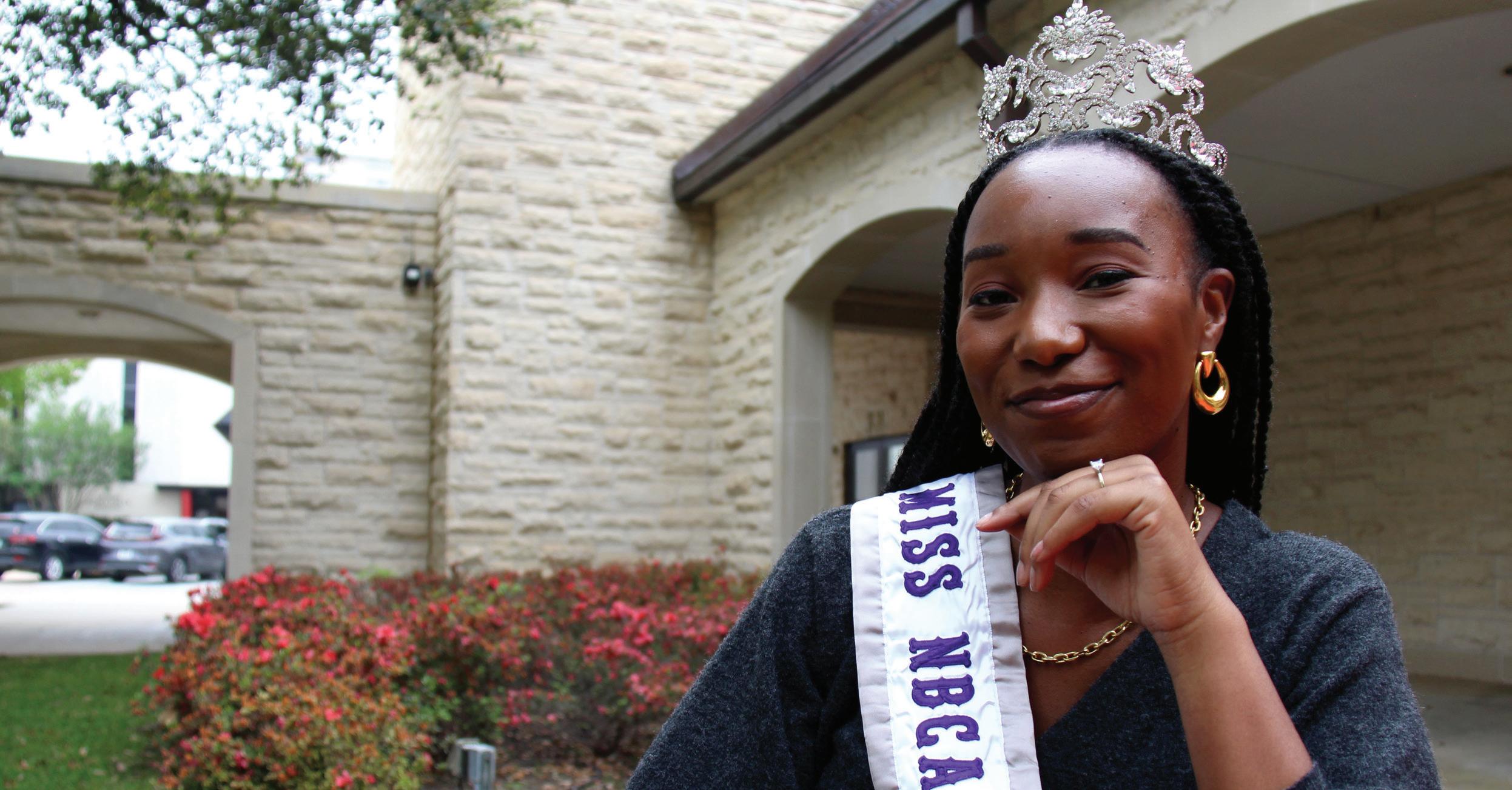
Adrian Pruett met Michelle Obama when the First Lady visited Howard University, but Pruett never told her colleagues and students about this celebrity meet-and-greet in detail until a Chapel talk in January.
The Class 7 math teacher started her speech with a story about her relationship with her “royal advisor,” a Howard faculty member who supported Pruett during her preparation for the Miss Howard University pageant, but they rubbed each other the wrong way during the initial rehearsals.
“I ended up having a really great relationship with her, but I’ve learned that you have to connect with people before you can try to change them,” Pruett said. “I learned to show love before hoping to make an in uence.”
Pruett brings this supportive attitude to her daily math lessons. Review photographer Colin Caughran says he learned more than just arithmetic in middle school.
“She’s a very wise person,” Caughran said. “She likes to take her life experiences and turn them into lessons.”
For her Chapel talk, Pruett began speaking in an Australian accent, revealing glimpses of her rarely-mentioned artistic background.
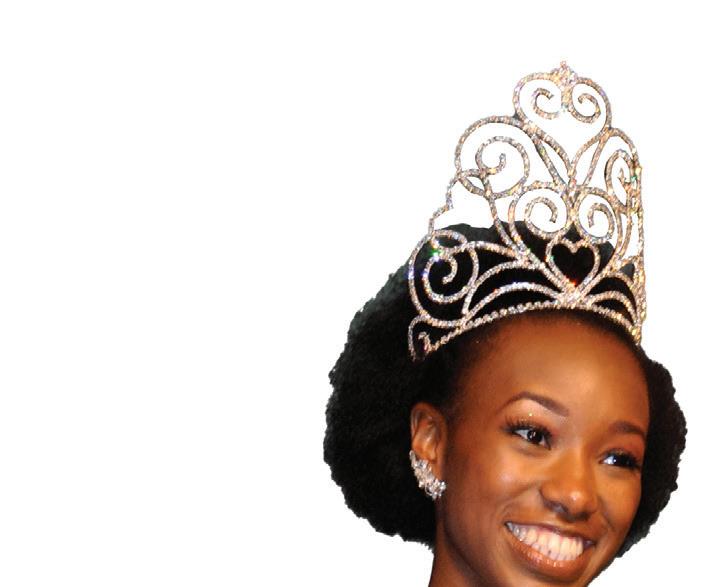
to compete in a dorm pageant against six other girls. After winning the title of “Dorm Queen,” she advanced through the pageant for the Colleges of Arts and Sciences, the Howard pageant and nally the National Black College Hall of Fame Pageant, informally known as the Miss HBCU pageant. There are over 100 institutions known as Historically Black Colleges or Universities, or HBCUs. Designated by the Department of Education as places of learning established before 1964 and focused primarily on the education of Black Americans, these schools serve as cultural beacons for many. Though some member schools do not participate in pageantry, it is a signi cant part of campus life for a liated institutions.
It required me to really think about who I am, what’s important to me and how I present that to others authentically.
ADRIAN PRUETT
“It was about knowing both our city of departure and our city of arrival, who we are, and where we’re going,” Pruett said. “It required me to do a lot of research and really think about who I am, what’s important to me, and how I present that to others authentically.”

The Miss HBCU pageant involves a series of out t changes. Pruett went on shopping trips with her mother.
The Miss HBCU pageant involves a series of out t changes. Pruett went on shopping trips with her mother.




With her talent, speech and gown ready to go, she was all set for the rst day — except for her hair.
rst day — except for her hair.


“I had a lot of conversations about how to wear my hair,”




“I had a lot of conversations about how to wear my hair,” Pruett said. “My hair is naturally very coily, and I love it. But for the pageant, people were encouraging me to wear straighter styles.”
Pruett and her mother decided to buy a straighthaired wig, since it would be the easiest way to avoid any unexpected mishaps.
be the easiest way to avoid





and concert she could. As a
In high school, she sang in the choir all four years and signed up for every play and concert she could. As a senior, she played Dorothy in “The Wiz.”


“There is always going to be a level of vanity involved with pageants, and the representation in the media has always perpetuated this image that pageants are all about that vanity. What led to being successful in a pageant was really more about other skills.”

to bring life into my face or how to stand up in a way that


Unlike the Miss America Pageant, Pruett does not consider the competitions she participated in as beauty pageants. She refers to them as “scholarship and cultural pageants” or simply “pageants.” When English teacher Kim Roquemore (‘87) attended Howard, the pageant winners played a signi cant part of Homecoming celebrations in which tens of thousands of people traveled back to their alma maters.
“The role of the pageant winners was big,” Roquemore said. “They’re part of the whole tradition.”
Pruett has been teaching math for 14 years. Upper School math teacher James King has known Pruett for even longer. He attended Morehouse College, an HBCU that sponsors a pageant called Miss Maroon and White.

“Theater taught me to command an audience and project my best self, whether by learning how to project my voice, how is commanding and demonstrates respect,” “It be an important part of everyone’s life.”


Pruett said. “It should


At Howard, Pruett intended to continue performing, but she struggled to nd opportunities.


“It’s a really prestigious title — they take it really seriously,” King said. “I was just a spectator, but the attendance at the pageant was huge. People came from all over to watch.”


Wanting to branch out, she spontaneously agreed

For pageant participants, preparation for Miss HBCU was rigorous. Contenders had to commit to months of rehearsals and auditions, and they were required to take a week o from school during the competition. The contest also included a talent portion. Pruett drew on her stage experiences and sang a medley of her favorite songs. It also involved a speech, which Pruett modeled after the instructions ight attendants give before takeo , drawing parallels between an airplane taking ight and the “ascension of Black culture.”

do it. “I took the wig o , and I started u ng my hair into an afro.”
But two hours before the show, Pruett looked in the mirror and knew she couldn’t do it. “I took the wig o , and I started u ng my hair into an afro.”


“Out of 32 queens, I was the only one wearing my own texture of hair,” Pruett said. “So when I won, it was such a moment of pride because I felt like I did it as me.”


With the title came the responsibility of representing the Howard student body. Pruett served as a goodwill ambassador, welcoming in uential guests to school, including a certain former First Lady.
Pruett had brie y met Michelle Obama a year before winning the HBCU pageant when the Howard choir performed at the White House. She was excited to greet Obama once again as Miss HBCU.
“I know for a fact I’m going to tell my grandkids these stories,” Pruett said. “I often remind myself to live a life that is adventurous enough to be interesting to them.”
By the time she was a senior, Pruett felt more accomplished than ever — but also slightly disconnected from her friends.
“When we aim for personal greatness, it comes at the cost of being present for others. I used to be very much an achiever, and I still am, but I put community over achievement now.”
Pruett has long since traded her crown and sash for calculators and protractors, but she still treasures her pageant experiences.
Pruett encourages everyone to do something that scares them, “but also makes them really proud of who they are — especially if that thing has to be done alone. The pride from doing something courageous and authentically is the most rewarding feeling I know to exist.”



Story by Aleena GIlani












Noa Morte González did not expect to get a tattoo at 16. But there she was, just a few weeks before her ight to Houston, in a Spanish tattoo parlor with her mother.
Morte González and her mother rst considered getting matching tattoos after they learned that she would be spending her junior year at St. John’s — over 5,000 miles away from her home in Málaga, Spain. But it was not until August, when reality sunk in, that Morte González and her mother fully committed.
“I felt that the exchange year was going to be a change for me,” Morte González said. The tattoo, located on her right arm, “was also part of the change.”
They settled on sunglasses with pink lenses and the words “todo pasa” (“everything passes”) written below in tiny, black script. Morte González says she and her mother are often cynical, so the colored lenses are a reminder to “look at everything with a di erent color, rather than in blackand-white.”
While Morte González was excited about spending her year abroad, she anticipated that there would be rough patches, too. The words “todo pasa” reassure her “that everything gets better at the end.”
Though 16 is considered young to get inked, Morte González is part of a larger trend of Gen Z ocking to tattoo parlors. According to a 2023 study by the Pew Research Center, 41% of Americans under 30 have at least one tattoo. Of the remaining 59%, one- fth say that they are extremely likely to get one.
Growing up in the ‘90s, science teacher Carter Spires says that tattoos were far more rare.
“I didn’t really know adults with them,” Spires said. “To people their age, it was something you get if you’re in the military or in prison or if you’re a college student who made a bad decision.”
English teacher Colby Ornell, who has three tattoos, says that they have taken on a new meaning — especially for women.
“This is a way that I get to take ownership,” Ornell said. “This is my body, and I control how it looks and what goes on it.”
Senior Emarie DiBella got a tattoo in the fall, just a few weeks after her 18th birthday. She kept it simple: the word “Beloved,” in small, cursive lettering. DiBella got it to honor her grandmother, who died the summer after her sophomore year.



“She always used to call me her beloved,” DiBella said.
The word also has another meaning. One of the songs DiBella listened to while














grieving, “Beloved” by Mumford and Sons, is also about the loss of a grandmother. “It really has a lot of connection,” she said.
Since DiBella got her tattoo, several friends in the Upper School have asked her questions about the experience. Some of them, she says, may be getting tattoos themselves.
“Seeing that someone their age is getting one breaks a little bit of the stigma,” DiBella said. There is currently no Upper School policy regarding visible tattoos for faculty or students, yet few have them. Spires, whose left arm is covered in colorful ink, says his hiring in 2023 has encouraged teachers to be more comfortable showing their tattoos.
“I like to say that there was a crack in the door as far as faculty with tattoos, and I just sort of came in with a battering ram and knocked it open,” Spires said.
Spires says that he had always been “enamored” with tattoos. He got his rst — two exclamation points, à la ‘Jeopardy!’ — to commemorate his back-to-back wins on the game show in 2016.
This is a way that I get to take ownership. This is my body, and I control how it looks and what goes on it.
COLBY ORNELL
“The rst one kind of busts the door down,” he said. “The moment you have one, you want more.”
Spires’s sleeve, inked in the neo-traditional style, pays homage to his Alabama and Texas roots. It also includes an image of Aragorn’s sword from the Lord of the Rings trilogy and an owl in honor of his alma mater, Rice University.
“My personality is literally on my sleeve,” he said.
English teacher Kristiane Stapleton, who has four tattoos and has been teaching for 19 years, says that she would “de nitely have more tattoos” if she did not work at St. John’s. While her tattoos are sometimes visible at school, Stapleton chose to get them in places that could easily be covered.
One such tattoo is a “teaching tattoo” on her upper arm. It is an image of a century plant, a kind of agave that shoots up a tall, central stalk covered in golden owers. According to myth, it only blooms every 100 years then dies, leaving behind o shoots that y away and continue the cycle.
“The reality is that when that center shoot dies, all of the little golden pods are seeds that can be replanted,” Stapleton said. “It’s a reminder that I only have one life — but that what I do here matters and continues.”
While Stapleton has dedicated her life to teaching literature, none of her tattoos are inspired by lines that she has read. Yet.
“The only thing that keeps me from doing it is that, frankly, in every book I read, I can nd a line that I love, that makes me feel something,” she said.


Two of Ornell’s tattoos are visualizations of poetry verses. One, a small drawing of a girl looking out a window, represents a line from Tracy K. Smith’s poem “Life on Mars.” The other, a matchstick, is inspired by a line from “A House of My Own” by Sandra Cisneros.
“It is so English teacher of me,” Ornell said.
Ornell says that her tattoos often open the door to meaningful conversations. After getting her rst, she was surprised by how many of her colleagues asked about it.
“Other people would show me their tattoos and why they got them,” she said. “All of a sudden, we’re talking about poetry.”
Math teacher Garvin Gaston looked into getting a tattoo after Juno, her dog of 13 years, died in 2021. She decided to get a temporary tattoo of Juno’s name on her wrist. The studio she visited said it would disappear in ve to 14 months. After 14 months came and went, the tattoo was still there. By then, Gaston had decided to have Juno’s name redone in permanent ink.
While Gaston is not sure if she will get another tattoo, she says that she will “never say never.”
Tattoos are no casual a air. Small ones usually start at $50 and take about half an hour to complete. Larger pieces — like Spires’s sleeve — can cost thousands and require several hours-long sessions in the chair.
Both students and teachers with tattoos stress the importance of researching a parlor and an artist beforehand. Otherwise, the tattoo may be inked in the wrong style or in poor sanitary conditions.
Beyond the basics, Stapleton has three additional rules for students who are considering tattoos: do not get any until after college, do not get them impulsively and, if you want another, wait at least a year between each one.
DiBella also stresses the importance of patience when considering a tattoo. “Think on it for a really long time,” she said. “You always want to look at it and know this was the right decision.”
Getting a tattoo is not a pleasant process. DiBella warns that the pain can be di cult to bear.
“I want another tattoo, but I don’t know how I’m going to do it,” she said. “This was a really small one, and it felt like getting cut.”
While Ornell acknowledges that the process is painful, she says that getting a tattoo is not as scary as it looks.
“It doesn’t feel like somebody is permanently etching layers of my skin with a very sharp needle. It’s just like a cat scratch,” Ornell said. “Then this thing appears, and it’s kind of magical. I literally have changed how this part of me looks. It’s cool.”
Despite the pain, both physical and nancial, no one I spoke to has any regrets.
“There is a real power and satisfaction in the idea that a part of my body looks a certain way forever,” Spires said, “because I chose for it to look that way.”
How The North Face became the go-to choice for most students
After a Chapel or assembly, backpacks are scattered beside the Great Lawn.
Upon closer inspection, the majority of them seem to be manufactured by the same brand: The North Face.
When freshman Emily Hines was asked why she purchased her North Face backpack, she responded, “Because everybody else in the grade had one.”
Roaming the halls, students and faculty cannot walk ve feet without laying eyes on at least one North Face backpack. Freshman Penelope Moore purchased hers because her Away backpack broke down — but also because of The North Face’s “popularity.”


Face backpack two years ago for a summer trip, and she has been using it ever since.
backpack could not hold all her supplies.



The North Face, along with the popular Jansport brand, accounts for 55% of backpack sales in the U.S.



Salisbury likes The North Face backpack because it can hold a lot of her stu , even though it looks smaller than most.
Senior Adair Patterson used to own a North Face backpack, but she and several friends recently converted to Target-brand pink sparkly backpacks. “It’s fun because we are embracing the idea that, even though we’re getting old, we still have a younger side,” Patterson said.

The North Face became popular in the 1970s and 1980s, appealing especially to outdoor enthusiasts. Today, it is a staple for high school students due to its functionality and design.


students due to its func-
The trend is spreading. Photos of friend groups sporting colorful and childlike backpacks for their last year of high school have spread across TikTok and Instagram.
Mark Vann got his Cole Haan backpack over winter break to replace a Helly Hansen backpack, which fell apart due to the weight of his textbooks. These days, Vann no longer worries about his backpack breaking, yet the bag is far larger than most, especially when overstu ed with school supplies, which has created some awkward maneuvering in the hallways: “I’ve turned into a hallway and accidentally bumped into someone because I didn’t anticipate how much my backpack was sticking out.”
Even though it is not the most popular, Vann is glad to have a backpack that can hold all his textbooks — and is even big enough to use for travel.


“It’s beenough my stu , so its
“It’s a pretty good backpack because it has enough pockets for all my stu , so its popularity is justi ed,”
popularity is justi ed,”
Freshman Allison Salisbury got her North
‘Bubble
WFreshman Ailey Takashima has been using her black Jansport since sixth grade. “It can hold a lot,” she said. “It has a lot of pockets.” She initially purchased both a North Face and Jansport, but she was surprised to nd that The North Face
“It’s de nitely not the brand that matters,” Vann said. “It’s how proud you are to wear your backpack, the way you utilize it, and if it gets the job done.”
hile Dwight Raulston leads his Complex Analysis class, students from his Multivariable Calculus class work in the same room. Despite the somewhat complicated arrangement, it is necessary in order for him to teach both courses. But this might not be an issue next year — it all depends on how many people sign up for other so-called bubble classes.
A core feature of the St. John’s curriculum is o ering as many practical and interesting electives as possible, though at times this may mean cutting a course with low enrollment.
dents were free during any other available carrier. Eventually, Raulston and Kuhl decided that the best course of action would be to teach Complex Analysis during the same carrier as another Multivariable Calculus as they have sometimes had to do in previous years.

Overseeing course selections is Jennifer Kuhl, Dean of Academics. While she concedes that not all classes will make, “It’s better to o er many course options, see where interest lies, and then meet the needs of students,” Kuhl said.
Courses that do not reach the minimum of eight students are sometimes cancelled to ensure that each class has enough people for varied discussions, yet required courses or those that are part of an academic progression do not have a minimum.
“Having a smaller number of students makes it di cult to go deeply into a subject because you don’t have as many voices and ideas represented,” Kuhl said.
To further complicate matters, there is often only one section of a class taught each semester, which can lead to scheduling challenges for students. For instance, if a student wants to take two di erent classes that happen to be scheduled for the same carrier, they must choose between them. While trying to schedule his Complex Analysis class, Raulston found that there was no carrier when all his students were free. He considered trying to teach most of them during one carrier and tutoring the others, but no more than two stu-

“There are so many possibilities for students, and it just spreads the population,” chemistry teacher Roxie Allen said. “The more electives that you o er, the more likely you’re going to have ones that don’t meet the minimum.”
Teachers with courses “on the bubble” must work every year to make sure they interest enough students so the course makes.
Sergios Paschalis teaches Ancient Greek, which has recently been changed to an honors course in order to encourage more students to enroll. Allen, meanwhile, tries to spread more awareness about her Organic Chemistry class. “It’s encouragement by current teachers that gets kids to subscribe to higher-level classes,” Allen said.
Some students choose classes just because of the AP or Honors designation, which provide a 0.6
bump in grade point average and may look better on a transcript.
“There are some students who are certainly choosing them more so because it will give them a little bit of a bump, but when we’re talking about electives, it is more student-interest driven,” said Jeremy Johnson, Associate Director of Admission & College Counseling.
Courses also rely on teacher availability, so even if there are enough students interested in a class, there may not be anyone available to teach it. Another consequence of having some smaller classes is that it is possible that other teachers in the same department may have more students.
“I don’t think we should make a class with under 10 students if it means that other classes have to be overfull,” Allen said. “That’s just unfair.”
Some students in smaller classes prefer the dynamic created in an intimate classroom setting.
Senior Jacob Green’s Ancient Greek class has only ve students, allowing him to enjoy a more “tailored” experience.
“People are way more engaged in my smaller classes,” he said. “No one is able to just sit in the back and not talk.”

In Part One of a two-part series, we explore the perceptions and realities of Greek life
Story by Lee Monistere
From her arrival at the University of Virginia, rst-year student Virginia Carolyn Crawford was told: Don’t ride the moose.
According to Virginia Carolyn Crawford (‘24), an active member of the Chi Omega sorority, “If you do, some houses could potentially blacklist you. You have to be conscious of not making crazy choices when you’re going out, especially during rush.”
The moose in question is located in a UVA fraternity house, which girls tend to climb on at parties. Such a lack of decorum can be frowned upon by sororities.
Sororities also have strict rules prohibiting prospective new members from frequenting bars or fraternity parties during rush week.
“If you do, it will get reported,” Crawford said. “In the rst semester, you are allowed to go out and socialize, but you just have to be more conscious of not o ending somebody or not looking totally stupid and reckless.”
Sororities and fraternities are student social organizations that are more commonly referred to as Greek life. While a majority of chapters, both national and local, are centered around the college social scene, some Greek organizations are based on common areas of interest like medicine or business. Greek life is dominant in the schools of the Southeastern Conference, with the number of chapters ranging from 30 at Texas A&M to more than 60 at the University of Georgia.
The number of students involved in Greek life varies by school. At Vanderbilt, just over a quarter of students are involved in sororities while almost three-quarters join at Washington and Lee. At the University of Texas, only 16% join a sorority while almost half pledge at the University of Alabama. At Tulane, more than half the women participate in Greek life compared to just 15% at Washington University in St. Louis.
In the Ivy League, a mere 6% of all students at Brown are involved in Greek life while roughly 60% are members of Greek organizations at Dartmouth.
Despite the level of participation, Crawford notes that when people think of Greek life, the majority associate it with the “Bama Rush TikTok stereotype.”
“People paint it as this super cial, payingfor-friends process,” she said. “While there is a nancial barrier to rush, it’s worth it if you can sustain it. People underestimate how intense the bonds are and underplay that the whole goal is to nd people who feel like you’re home.”
Before rush week, sororities create TikTok
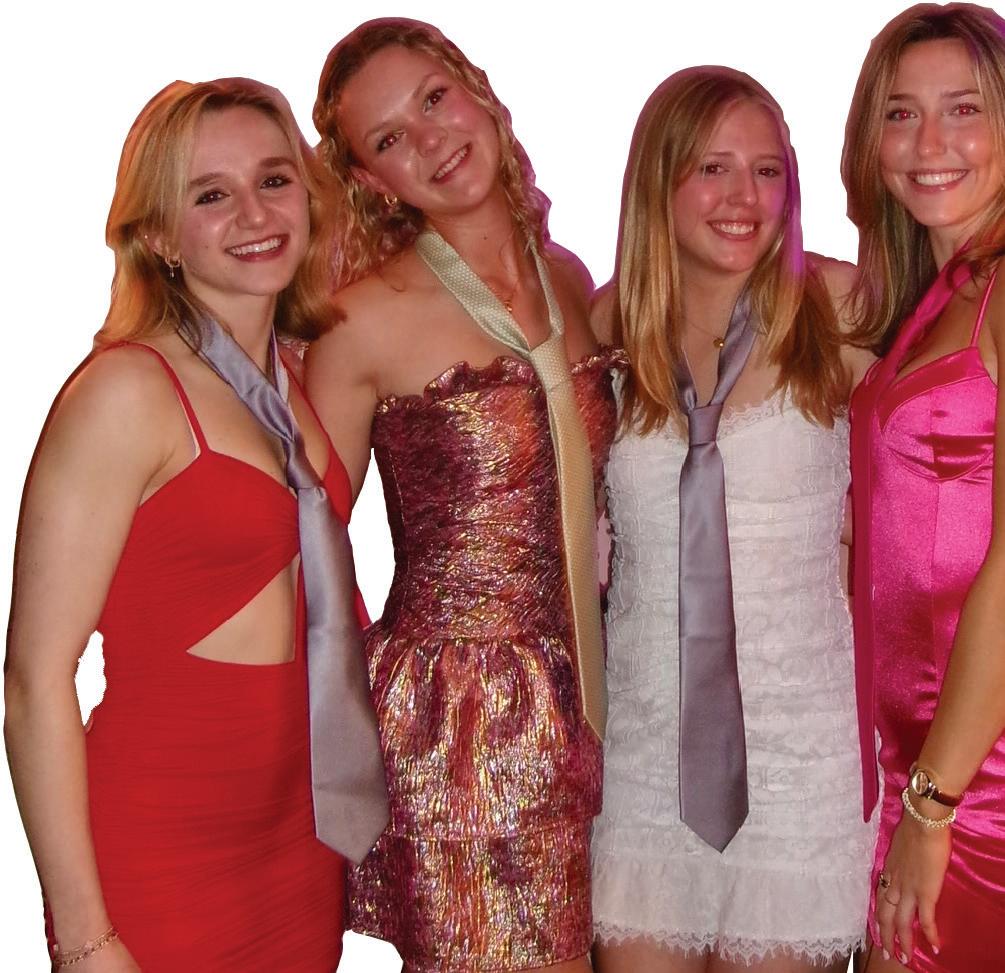


videos to entice girls to join their chapters. The typical video has around 20 girls doing synchronized dances and cartwheels while hundreds of others are bunched behind them cheering. The girls wear out ts that t a certain theme, also plastered across a banner hanging from the balcony of their sorority mansion.
Bama Rush has a foothold on the internet every fall. Each day, girls make videos showcasing their out ts and explaining where every piece of clothing is from.
Crawford notes that this extreme stereotype does not accurately re ect sorority culture.
People act like it is this rich, preppy, catty, not genuine process — and I don’t subscribe to that.
CRAWFORD
“People act like it is this rich, preppy, catty, not genuine process – and I don’t subscribe to that.”
Math teacher Kimm Shafer was a member of Alpha Delta Pi at the University of Texas. Being a part of her sorority motivated her and her sisters to work harder; at UT, ADPi freshmen had study hall hours to ensure their sorority continued to have the highest GPA on campus.
“When it came to studying, people were very serious,” Shafer said.
Senior Mary Garvey plans to rush her freshman year at Tulane University, which begins in January.

“Rush is a good way to get closer with the girls in your class, and it’s a great opportunity to have more of a schedule in college,” Garvey said. “One of the big things that draws me to sororities is forming study groups with like-minded people and creating a closeknit group of friends with the people you meet.”
When Shafer was in college, sororities would not send students an invitation or rush them unless the potential new members submitted letters of recommendation from someone in that sorority. Today, letters of recommendation are not used as frequently, depending on the sorority and the college. Shafer’s daughter Katy (‘18), a member of Pi Beta Phi at New York University, did not submit any letters of recommendation.
Crawford says that the recruitment process at UVA is less intense compared to some schools, especially regarding the amount of preparation required.
“We had to submit the interest form by late
October, but I had friends who submitted it right when it opened in August and others submitted it the day before.”
Crawford’s friends at the University of Texas have discussed how “emotionally draining” the preparation process was for them. The size of Crawford’s chapter is also signi cantly smaller — her pledge class consisted of 63 girls while most SEC sororities rush hundreds of girls per year.
“With the smaller size, you get to know people a little more easily, and the process feels a little more personal,” Crawford said.
The dress code also varies: at most southern schools, the out ts the girls wear during each round of rush week are more formal compared to northern schools.
Crawford remembers calling a friend at UT the day before rush and showing her the Reformation jeans that she planned to wear.
Her friend looked concerned: “You’re wearing jeans?!”
“I had to convince her that it was normal.”
Caroline Hankamer (‘23) started the recruitment process during her senior year at St. John’s. After she announced her commitment to the University of Mississippi on Instagram, sorority girls at Ole Miss immediately began reaching out, introducing themselves and o ering to help her acclimate to college life. She also began taking trips to Oxford, Mississippi, where she would stay with sorority girls and attend events at the houses.
Garvey plans to prepare for recruitment by reaching out to her friends at Tulane.
“I want to ask lots of questions about the process and try to be my best self throughout college,” Garvey said.
It is common practice for sororities to monitor girls’ social media before recruitment to get a sense of their interests and hobbies, but they are also looking for signs that a girl might not be the right t for their chapter.
Crawford said some girls tried to clean up their online presence to avoid controversy. “For the most part, as long as you aren’t painting yourself as this wild, crazy person, you don’t really need to adjust your social media.”
Since Ole Miss has girls from all over the country wanting to join their sororities, Hankamer never felt at a disadvantage by being from out of state.
“It’s such a big school that there were girls in our chapter from all over – and the chapters are really interested in nding everyone – so I always felt very seen.”
No matter how informed one is about sorority life, nothing can prepare them for rush week.
In our next issue, we will dive deeper into the recruitment process and the realities of Greek life.
When I wear jeans on free dress day, there’s not going to be very many other people also wearing jeans,” Titus said. “They used to be so common.”
One of the rst things Creedence Clearwater Revival did as a band was buy Canadian tuxedos. That is, matching denim pants and jackets — a juit, if you will.


does nd herself at the intersection of that Venn diagram.




and




Though the group was known for southern songs like “Born on the Bayou,” they were actually based in Northern California. The jean craze that has long transcended cultural and geographical divides is back today in a big way. Math teacher Garvin Gaston (‘99) has observed the rise and fall of waist and hemlines. Her out-of-school uniform until college was a t-shirt and jeans, a look she still returns to on weekends.
“I guess it’s just the ritual,” she said. A decade ago, the new norm of I-don’t-care-wear shifted to athletic shorts and tops, even (and usually) when the day’s plans did not include a trip to the gym.
Sophomore Olivia Titus, who thrifts most of her clothes, says cotton-based options are more economically viable than wicking material as they are generally priced lower and last longer.



When I wear jeans on free dress day, there’s not going to be very many other people also wearing jeans. OLIVIA TITUS
Kit Haggard, a senior, says that she will leave her athletic Free People ensembles behind in high school. Jeans strike her as a more “elevated” look. According to Haggard, “the current jean style is a little bit retro.”


The skinny and low-rise jeans of the 2000s and 2010s were a precursor to the tight- tting athletic short — while popular styles may bare more skin than they used to, they’re not perceived as overly immodest. We are simply witnessing the habitual cycle of hem length, which has reached its highest in concurrence with Y2K style revival. Every once in a while, denim exhibits the ability to break the boundaries of what makes a sensible pant: we have watched bell bottoms, ares and ultra-baggy jeans de ne stylistic, cultural and musical movements. And denim’s exibility didn’t start with Kendrick’s Super Bowl halftime show.


A denim connoisseur, junior Finn Brewer thrifts lots of tops and jackets, but he insists there is just something about buying jeans new — a solid pair can last forever in what some call a “buy it for life” scenario. Investing in a good, well-researched pair increases the jean’s lifespan and frequency of wear.
That’s one of the bene ts of styles based in workwear, like Carhartt jackets and double-patched knees: “I’d rather have a couple that are really solid that I know I can depend on,” Brewer said. But like-minded dressers may be in the minority.
“People wear athletic clothes absolutely everywhere.










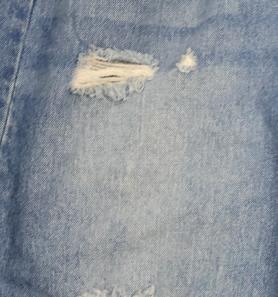






Brewer draws from his older sister’s SoCal style. He says the way he dresses is normal in California. “But here, I feel I don’t really see anyone who’s like me.” Gaston’s tee-and-jeans combo carried her throughout her time at the University of Vermont, but her Texan background in uences the way she styles denim. Her favorite ensembles involve one of her many pearl-snap shirts, which she often wears when performing, which is tting since many of the songs she plays on the guitar honor country greats like Johnny Cash and Robert Earl Keen.
According to our sources, the key to pulling o some controversial looks lies in the styling. The few who support skinny jeans agree they must be a medium-to-dark wash paired with a loose, but not oversized top. Pre-ripped and acid-wash jeans, they say, are irredeemable.

(PSA: He did not wear bellbottoms. They were straight-leg ares.) The modern teen has all these fashion subgenres to choose from, and then some — niche interpretations of these styles can create even more particular looks.


For Gaston, early ‘90s model Kate Moss from the unfortunately-named “heroin chic” era epitomized slummy grunge and low-rise fashion. Brewer and Titus also nd inspiration in alternative icons. Titus maintains that wearing baggy jeans does not automatically make you an emo fan, though she








Shoes, too, can play with hemlines to add air. Gaston says she wears sneakers — Asics or Nikes — with jeans when wearing a t-shirt or button-down. Junior Topher McCord pushes the limits by dressing up with a pair of huarache sandals. Senior Caroline Chiao likes to wear her twin brother Henry’s straight legs with a pair of GoreTex workboots.
“Jeans are just so versatile,” she said. “I like that I can kind of be ready for any environment.”
Chiao muses that while last summer was all about tiny shirts and tiny shorts, this year she will be styling her cropped tops with baggy bottoms. This concept plays into style ratio rules like smallsmall-big (styling two tted pieces with a chunky shoe, for example) and light-light-dark. If an out t adheres to these guidelines, the individual can put their own spin on it.
“I’m a big fan of the low-rise mom, wide-leg look, but I don’t know,” Haggard said. “I’m trying to take it in my own direction.”














































Oh, the (third) places you’ll go!
Caffeine and community go hand in hand in local coffee shops
Story by Melody Han & Riya Nimmagadda Design by Jennifer Lin
As junior Grace Manuel took a seat at her table in Slowpokes, a Houston-based co ee house, the scent of freshly brewed espresso and the noise of scraping chairs prepared her to open up her laptop and get busy on her homework.
For decades, modern media has romanticized co ee shops and tea houses by portraying them as communal hang-out spots. They are often the “third spaces” in TV shows where characters convene in a casual setting.
The famous Central Perk co ee shop from Friends is one of the most recognizable, with its impossibly always-available orange couch serving as the gathering spot for sharing gossip and creating core memories. Central Perk was the setting for some of the sitcom’s most well-known moments, including Ross and Rachel’s rst kiss and Joey’s most iconic line (“How you doin’?”)
The four main characters on the iconic sitcom Seinfeld meet up at Monk’s Café, the crew from How I Met Your Mother has MacLaren’s Pub and the gang from It’s Always Sunny in Philadelphia meets up at Paddy’s Pub to hatch their schemes and get into misadventures.
Jayden Chen started studying in tea houses last year as a sophomore. Although he did not have his driver’s license yet, Chen spontaneously decided to start studying at a tea house because he wanted a change of pace.
“Sometimes I will bring headphones and listen to music, but the background activity blends into each other, which helps me focus,” Chen said. Going to a third space does not necessarily mean one will be productive.
“You should go with a mindset to get work done,” Chen said. “And if it helps you to be there, then go.”
Though some students enjoy the silence of the Reading Room, others prefer the ambiance that co ee shops bring.
Such was the case for Helen Yang, a junior who enjoys busy co ee shops, which she claims increases her productivity. She nds the back-

ground noise, music and the whirring of the coffee grinder make it easier for her to concentrate.
During midterms, her local co ee spots were packed, so she headed to a Sharetea, where she spent up to four hours each day.
“I’ve become too comfortable at my house,” Yang said, “and it’s nice to have a change of scenery.”
Studying with friends helps some students develop a better understanding of concepts taught in class, but others cannot handle the distractions and reduced productivity.
“Although I am less productive with other people, studying with others is more enjoyable because I get to have little breaks where I can talk to my friends,” Yang said.
They have a unique, cozy atmosphere that makes them an essential part of any community’s culture.
HELEN
YANG
Coming out of the pandemic, co ee shops became an opportunity to escape the mundaneness of home. During the Age of Covid, 7.3% of co ee shops nationwide closed — more than 5,000 overall. Since 2020, these third spaces have made a comeback, with over 40,000 new or reopened businesses in the U.S. and the co ee market producing over $68 billion.
Co ee shops and tea houses appear more welcoming and exible, allowing students to feel relaxed, unlike libraries, which impose strict rules


about food and noise. These third spaces also provide psychological bene ts, including improved mental health and fewer feelings of loneliness and depression.
According to Business Insider, studies have found that “having access to third places like co ee shops and parks are associated with better well-being and social connectedness.”
With the rising popularity of teahouses like Sharetea (ten locations in the greater Houston area) and Gong Cha (eight locations), the new generation replicates the nostalgia of co ee shops.
Social media trends, including bubble and fruit tea, have increased sales among younger customers. From 2019 to 2024, teahouses have grown almost 25%. The U.S. currently has about 6,500 tea houses.
Caroline Harvey frequents co ee shops and tea houses with her mother and sister. The sophomore claims the background noise helps her be more productive, but when the co ee shops are too loud, she heads for the tea house.
“Tea houses usually have more people studying, so it’s a lot quieter, but co ee shops can be playing loud music, and not everyone is always studying, so there can be lots of extra noise,” Harvey said.
She also nds the larger tables in tea houses more conducive for studying compared to the random, decorative seating arrangements in co ee shops.
“Third spaces are important, not just as places to get work done, but also as inviting spaces to connect with friends and meet new people,” Yang said. “They have a unique, cozy atmosphere that makes them an essential part of any community’s culture.”




1
The Review’s resident redheads wrote all about the negative stereotypes pertaining to gingers on page B6. Check it out or they will steal your soul.








2
3 4 5 11 12 13 14 15
R-E-D-H-E-A-D. Enough said.




Madame Stein
The Review redhead we retain in an advisory capacity. She is magnifique !
Anna of Arendelle
In a rare example of red-on-red violence in a Disney movie, we cheered when Anna punched Prince Hans.


Ms. Frizzle
6

We hear that he’s a great artist who painted “Starry Night,” but our favorite Van Gogh works are his self-portraits that show off his flaming red hair.
We loved her commericals for Dunkin’, which is the only aspect of her career we can mention in a family-friendly newspaper.

8
Wendy of Wendy’s
While her red hair was always a mess, her outfits and school bus were always magical. We love a good Frosty.


Prince Harry
He represents everything wrong with the modern monarchy, but unlike his brother William, he still has a full head of (red) hair.
Little Orphan Annie
It’s a hard knock life to be a redhead...and an orphan.

The most magical redheads in the Wizarding World, Ron and Ginny get all the attention, but we prefer the twin troublemakers Fred and George.
Lindsay Lohan
In Mean Girls she says, “It’s not my fault you’re like in love with me or something!” Guilty as charged.
Conan O’Brien

At the risk of putting too many Disney princesses on the list, the Scottish archer gets the nod over the Little Mermaid because, unlike Ariel, she is a real redhead.
Although he committed the unforgivable sin by covering his beautiful red hair with a white powerded wig. Still, he is the Father of Our Country, so he gets a pass.
Princess Fiona 7 9 10 16 17 18 19 20
From the Harvard Lampoon to hosting the Oscars to recently receiving the Mark Twain Prize for American Humor, we’re Team Coco all the way.
He’s in love with the shape of you, and we’re in love with his bright red hair.

It would be a stranger thing if she was not on this list, and she single-handedly put Kate Bush’s “Running Up That Hill” back on the charts.
What’s black and white and red all over? Benedict Cumberbatch in a tuxedo.
Rick Astley
We’re never gonna give him up, never gonna let him down, never gonna tell a lie or desert him.

Donkey gets all the best lines, but Fiona kicks butt and teaches an important lesson: whether a human or an ogre, it’s better to be a redhead.
Dishonorable Mention: Thomas Jefferson





Why students compromise their authentic selves to find validation
Story by Yutia Li
After years of fundraising, construction and anticipation, the Blanton Family Tennis Center is nally open. Featuring six red-and-black courts and bleachers for spectators, the latest addition to the athletics facilities represents an opportunity for tennis to be part of the campus culture.
Before the new courts opened, practices were held throughout the city at Pumpkin Park, the River Oaks Country Club or Rice University. Getting to and from the o -campus courts cut into practice time.
“We usually only had 45 minutes to practice, but now we can practice for hours,” senior Remy Phan said.
Rather than dealing with tra c on the way to practice, tennis players can now easily walk across Bu alo Speedway.
To accommodate both teams, the boys practice in the morning from 6 to 7:30, while the girls practice from 4 to 6 each afternoon.
“It’s nice for us in the evening because we don’t have anything to do, so we can get our homework done and relax,” junior captain Shiv Khera said.
Since the Mavs never hosted a match before this year, they never had a home-court advantage.
The Blanton Family Tennis Center not only hosts matches, but also members of the SJS community can also come to watch.
After coaching the girls team last year, Zeze de Moura is now the boys head coach. He stresses the importance of conditioning, holding workouts in the gym when outdoor practices get rained out.
While players may nd it exhausting, de Moura reminds them that the workouts are worth it, and if they stay consistent, their hard work will show up during SPC.
The girls new head coach, Lori McNeil, has been working the team hard as well, pushing them to
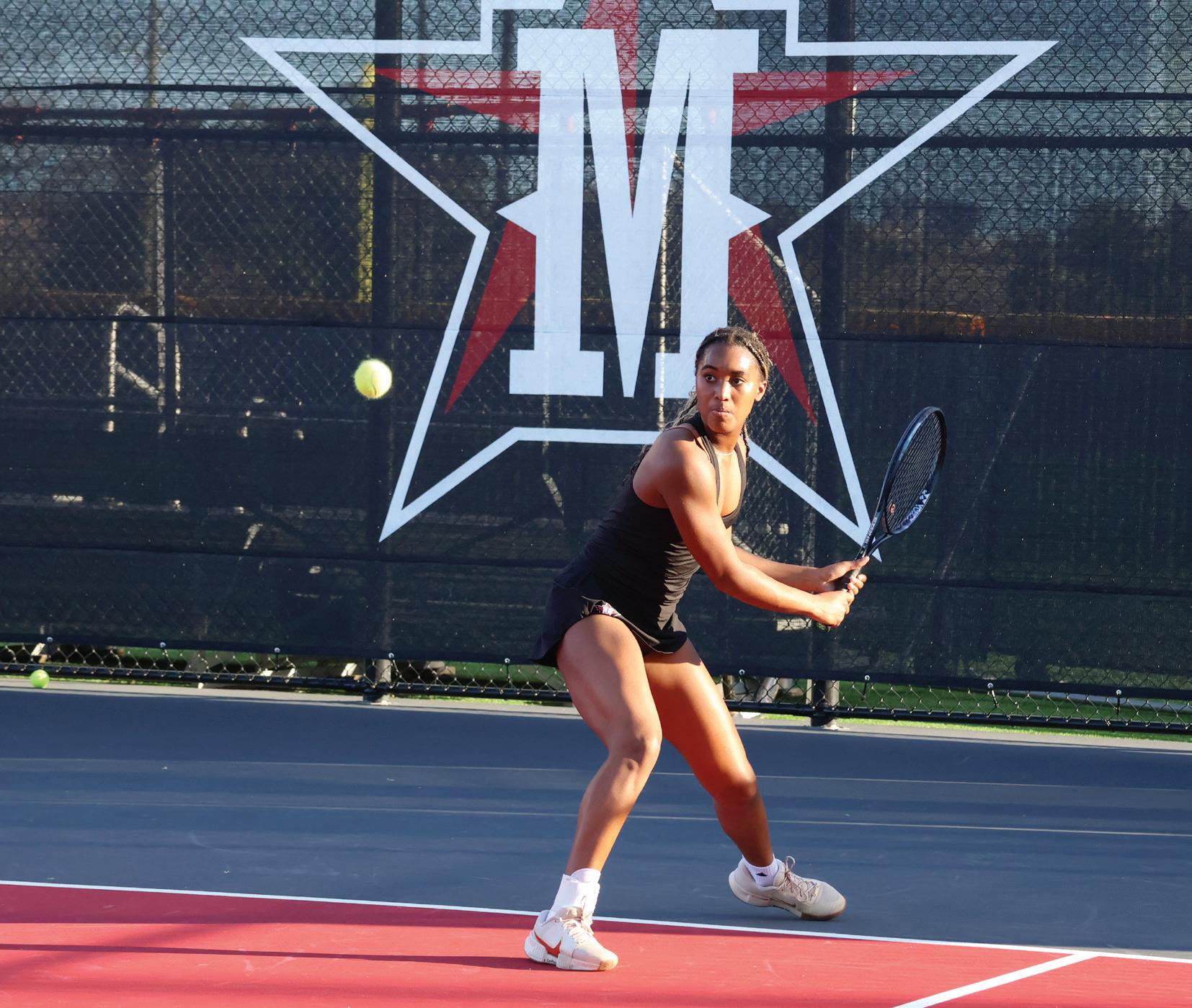
do more drills and running. McNeil wants to see her girls do their best on the court, and she frequently brings in assistant coach Miguel Chavez to help with practices. An increased focus on team bonding encourages the players to have a positive mindset and train hard.
“Every day she seems like she truly wants to make us better,” junior Elizabeth Patton said.
In March, the combined boys and girls team won the Texas Tennis Coaches Association Private School State Championship in College Station. Each school played 13 matches: eight singles, four doubles and one mixed doubles. The rst team to win seven matches, advanced to the next tournament round.
On the rst day, the Mavericks defeated Live Oak Classical (8-0) and San Antonio Central Catholic/ Incarnate Word Academy (7-0). On the second day, the Mavs beat the combined Dallas Jesuit/ Ursuline Academy team, 7-4, in the semi nals before facing o against Kinkaid in the nals. Soph-
omore Kayden Johnson and freshman Lauren Chen won their singles matches to put the Mavs up 6 matches to 5 with two matches remaining.
Junior captains Shiv Khera and Khaleel Abaroa played the nal two matches. Abaroa, playing a much higher-ranked opponent, clinched his match in a tiebreaker, 10-8, securing the State Championship. Since his match no longer impacted the nal result, Khera’s match was halted in the middle of the rst set, making the nal score 7-5.
“The environment was great,” Abaroa said. “I like playing under pressure, but my opponents don’t. I think that put me over the edge because I was getting hyped.”
Coming back from winning the State, both tennis teams have set their goals on winning SPC.
“That’s what is pushing us to keep on going and training.” Khera said.


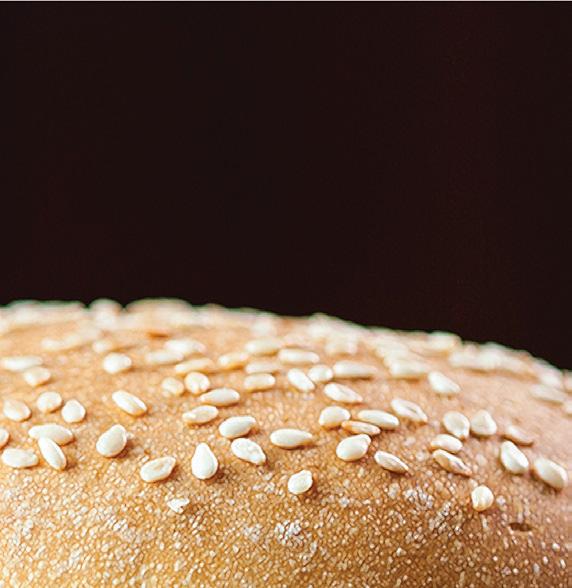
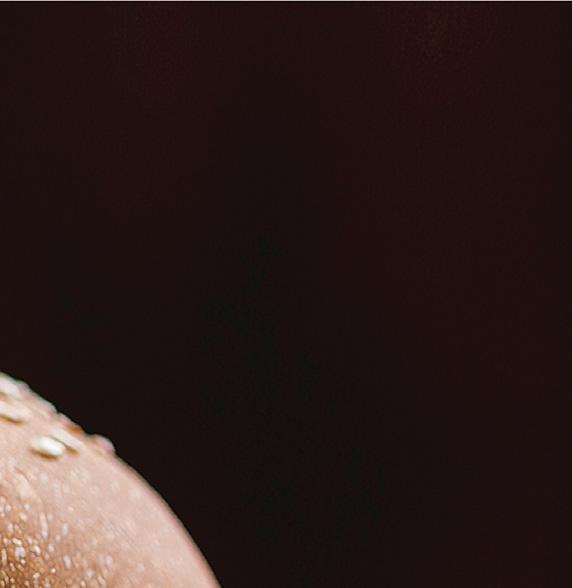





















Opinion by Ainsley Bass & Mikail Khan
Illustration by Ella Hughes
Every Friday during the fall, students crowd around the Great Lawn to watch pep rallies, and while the captains of each fall sport pass around the mic to let spectators know when and where they will be competing that weekend, it is understood that most students will only be attending the football game.
lot of support from head coach Richie Mercado.
“Our coach always tells us that at meets we’re not going to have too much support from others,” Caruso said. “We have to perform for ourselves.”
for Senior Night.
Female athletes understand that their classmates are busy and generally only like to attend games that are worth watching, like those against Kinkaid or Episcopal, but that doesn’t mean they should be ignored the rest of the season.



Since the Kinkaid Game on Nov. 1, there has not been another pep rally.
Caruso notes that because attendance at the meets is mostly parents, it is important for teammates to cheer for each other. “Just saying Good Luck is good enough.”




Once the hype of Kinkaid Week died down after another disappointing loss, the eld hockey and girls volleyball teams went out and beat the Falcons — not that many noticed.
At the SPC Championship meet in Dallas, sophomore Sarah Spalding was standing atop the starting block for the rst heat in the 50-meter freestyle when she looked out in the stands. Not a single student spectator was in sight.
Studies have shown that having loud fans can have a positive e ect on individual performance. In Spalding’s case, an active student section gives her a motivational “adrenaline rush.” She concedes that having friends and classmates in attendance would also bring greater recognition to the sport.
“I feel like swimming is really underappreciated for how di cult and time-consuming it can be,” Spalding said.
For the few fans who are interested in how the swim team fared at a meet, results are not even posted on the SJS Athletics Instagram page. Meanwhile, other team sports get their scores posted regularly.
Sophomore Samuel Caruso has been running both cross country and track since middle school. During the fall season, he races nearly every Saturday morning in faraway places like Austin or The Woodlands.
“It is running, so I don’t blame students for not coming,” Caruso said. “If I wasn’t a runner, I wouldn’t really care.” Caruso still enjoys the competition, but he does so for himself — with a
For teams fortunate enough to play on campus, there are still signi cant discrepancies in attendance between genders. Even when sports do not share the same eld, the boys still get the prime start time. During the winter, the girls basketball team always plays rst, usually about 5 p.m, while the boys tip o around 7.
Our coach always tells us that at meets we’re not going to have too much support from others. We have to perform for ourselves.
At the girls games, parents often outnumber students.
“It’s just dead,” junior captain Valentina Doss said.
If students do show up to watch the girls, they often stumble into the gym in the fourth quarter when the game has already been decided. On some occasions, the sudden in ux of fans alters the pace of the game and creates added pressure for female athletes.
By the time the boys begin, the student section is packed with fans all dressed in the theme of the night. And on Friday nights, Liu Court is full.
While members of the girls team might wish that fans would show up from the player introductions until the nal buzzer, that’s an unreasonable expectation unless the girls teams get the prime time start — maybe just once, like

The reality is, all sports deserve recognition and should be valued equally.
Whether the sport is girls or boys, individual or team, athletes work hard and strive for excellence, which should be acknowledged. Athletes are devoted to competing regardless of their sport, yet only some receive proper recognition.
“Everyone’s doing their part, everyone’s training hard, everyone’s working hard, everyone’s doing their best,” Spalding said.
Although there are discrepancies between di erent sports, standards are slowly improving. Cheerleaders now show up to support teams other than football. The Spirit Club Instagram strives to promote more sports teams. With the help of members of the St. John’s community, athletes of all sports can nally get the recognition they appropriately deserve.
In 1972, Title IX mandated that there should be equal opportunities between counterpart sports, yet this only applies to universities and colleges and does not necessarily a ect high school athletics.
Powerful female athletes like Caitlin Clark and Serena Williams have proven that people will watch women’s sports. Other athletes that play more individual sports also continue to strive and provide interesting competition to watch.
For real change to happen, there needs to be more pep rallies, Instagram coverage and promotion of team spirit within the school community for every team, regardless of season. Awareness should be brought to all sports, not just the teams that are popular or successful.
In high school, parents should never be the only system of support at a meet or competition.













Story by Yutia Li | Design by Michelle Liu
Due to the personal nature of this story, sources referred to by only one name have requested anonymity.
During her sophomore year, Nina didn’t have time to both eat breakfast and drink co ee in the morning. So she would pour her latte into her cereal and gulp it down.
“It was disgusting, but that was the kind of urgency I had,” she said.
On her busiest days at school, Nina would skip lunch to do homework and devour a meal during a ve-minute passing period.
“I didn’t have time to just sit down and eat.”
Nina is one of countless students who feel a sense of forced urgency — a perceived need to achieve more and more, no matter how much they su er.
C. S. Lewis, author of “The Chronicles of Narnia,” described this mindset as the “inner ring” phenomenon — a drive to seek acceptance into what are commonly seen as the best, most exclusive groups, whether that is a prestigious university or a top sports team. Yet chasing after the inner ring becomes problematic when individuals compromise their authentic selves in hopes of gaining validation.
dents to compare accomplishments, pushing high schoolers to chase leadership positions, prestigious internships and, ultimately, the next inner ring.
“Even as a parent, you can see what other families are doing,” said Sage, who is also an SJS parent. “So you’re like, should I put my kid in robotics when they’re four?”

Po-Shen Loh, a mathematician and former coach of the United States’ International Mathematical Olympiad team, has come to SJS to give talks and teach math classes over the past two years. When Loh was in high school, he participated in whatever he “thought was interesting.” Now, he says that people are following recipes to get into college and similar exclusive spaces.

I had the mindset that if I was doing something, I had to be the best at it, or it wasn’t worthwhile.
DANIELA LAING
For many high school students, the college process is one of, if not the biggest, drivers of forced urgency. Back in 2002, the Ivy-Plus institutions, which include Duke, MIT, Stanford and the University of Chicago, received 175,000 total applications. In 2022, that number rose to almost 600,000, while available spots for incoming freshmen increased by just a few thousand.
Several factors have fueled this increasingly competitive college process, including the rise of early decision and early action, which typically have higher acceptance rates from a signi cantly smaller applicant pool. Many Ivy League universities now ll around half of their admitted class from this group, which pressures seniors to apply early.
The introduction of the Common App, which went online in 2007, has streamlined the application process for over 1,000 colleges across the country. In 2020, Covid-19 brought about test-optional policies, removing another barrier to potential applicants.
The current nature of college admissions has created a culture of hyper-achievement. The number of perfect ACT scores has risen nearly 20-fold over the past two decades (from 134 to 2,542).
Combined with increasingly extreme grade in ation, being a straight-A student feels like it’s no longer enough.
For Sage, who graduated from St. John’s in the 1990s, high school life was extremely di erent.
“You just went to school, played sports at your school and did whatever activities were o ered at school. You didn’t do all these extracurricular trying-to-get-ahead-type options,” she said. “When it came to the college process, I certainly did not feel that pressure either from St. John’s or from my parents that I had to go to the ‘right school.’”
Yet with websites ranking the top extracurricular activities and TikTok in uencers claiming to o er sure re tips for standing out, students like Nina develop a sense of forced urgency at a young age.
At 10 years old, Nina spent hours on her iPad watching college reaction videos and reading college blogs. “I was freaking out, like what am I going to do?”
Social media also provides a platform for stu-
“If you look at a math or debate team with four people on it and think, how do I ght my way into that little space, you’ll take a lot of shortcuts where you aim just for that, meaning you’ll throw away
lots of other things that will make you healthy,” Loh said. “And at the end of the day, only four people get spots on the team, and the people who failed to will have lost a lot of life opportunities.”
that the number of high school players throwing at least 95 miles per hour at the Perfect Game National Showcase increased from just ve to 36 from 2014 to 2024. The report also found that chasing better metrics — especially velocity — has contributed to the rising number of injuries at the professional level.
To combat this trend, Little League Baseball and most travel tournaments now have a maximum number of pitches a day and a minimum number of rest days before a pitcher can return to the mound. Yet this has done little to curb the drive to throw harder.
“What gets overlooked is that you’re dealing with people who are at very di erent levels of maturity in terms of physical development,” said former MLB player Paul Janish. “In a lot of instances, their bodies just aren’t quite ready to do some of that stu .”
Janish, who is currently the Director of Player Development for the Chicago White Sox, also cites early specialization — focusing on one sport at a young age — as a cause for forced urgency in club sports. Players, motivated to continue improving in the o season, often do not give their bodies adequate rest. “It creates the current landscape of feeling like you always have to be going.”
Sage adds that private training facilities and lessons only compounds the situation.

When senior Daniela Laing had a bad volleyball game, the last thing on her mind was resting and recuperating. Instead, she would get home, change clothes and take her volleyball outside to practice, no matter what time it was.
She gured that if she had sat the bench, then she was not too tired to put in the extra work. If she performed poorly, then she must not have put enough energy into playing well, so she did not deserve to rest.
“I had the mindset that if I was doing something, I had to be the best at it, or it wasn’t worthwhile,” Laing said.
When Laing started playing club volleyball at 10 years old, she found herself surrounded by talent. She was not just trying to win games — she was also trying to earn her spot on the court.
Laing admits that the cutthroat culture made her and her teammates better. Yet she soon discovered that “you can be best friends o the court, but on the court, everyone is competition.”

In rst grade, Kenna joined the Texas Pride Field Hockey Club and channeled everything she had into making the Red Team, their top travel team. After sustaining an injury in seventh grade, Kenna had to take time o to recover, and she felt as if all her progress had been erased.

“I was back to square one, and the club just kept growing bigger,” Kenna said. “It was hard to compete.”
Around the same time, Kenna began attending college recruitment meetings and made her list of target schools. At 12 years old, the pressure to decide her future stressed her out even more. She quit the club in eighth grade and stopped playing eld hockey altogether during her freshman year.
“If you don’t practice, you’re not going to get better,” Kenna said. “But at the same time, if someone is so stressed about every move they make, they’re not going to get better either.”
The pressure to perform has driven athletes to develop their skills at younger and younger ages.
A recent Major League Baseball study revealed
“I knew a girl who was the number one recruit for her sport when she came out of high school, but as far as I can remember, she never had a private lesson,” Sage said. “Nowadays, she gives private lessons to three- and four-year-olds.”
According to Janish, the drive to outshine other athletes as early as possible has transformed the pursuit of excellence into an unsustainable endeavor.


“There are a bunch of reasons that sports are really productive: the character piece, the discipline, emotional control, ability to work with others,” Janish said. “We’re wagering those foundational traits because we’ve become concerned with the results too quickly — and at too young of an age.”




ing wealthy. After starting a club at St. John’s, other co-leaders provided food and drinks out-of-pocket at meetings. Unable to contribute as much monetarily, she took care of sending emails and maintaining the social media page.

While many St. John’s students do not think twice about spending thousands of dollars on private tutors and test prep, Clara has to consider how she allocates her money. She acknowledges how fortunate she is that SJS covered the cost of her SAT prep class and that she receives far more college counseling support than her friends who attend public school.
“Whether it’s a higher SAT score or better Common Application essays or a better resume, in the end, it’s all backed by money,” she said.
Clara applied to her “dream school” in the rst
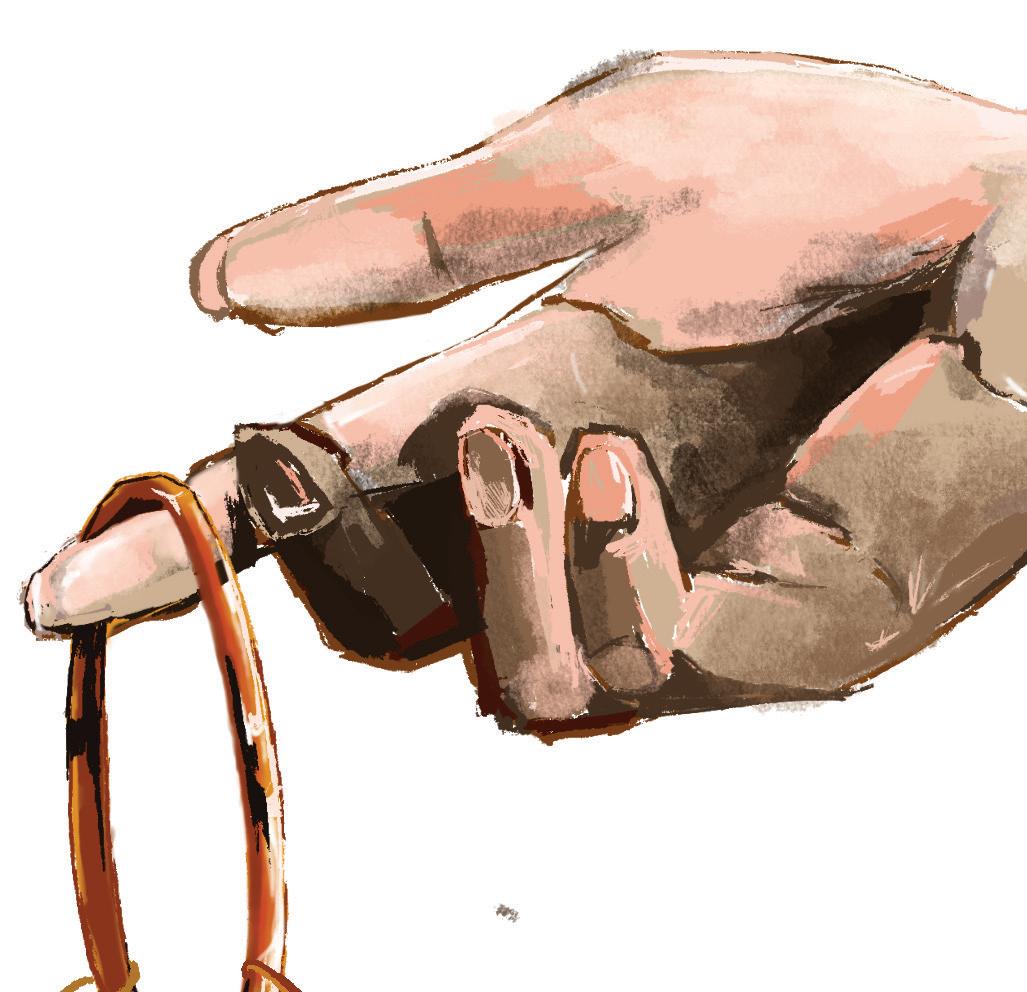
country
at least once a month. Besides travel expenses, her family had to pay club dues and purchase the best equipment. A eld hockey stick alone can easily cost up to $300, and players must own di erent types to play on di erent surfaces.
After Kenna quit, she felt that she had put a nancial burden on her parents for nothing.
“Field hockey was de nitely a life-changing experience, but I regret that my parents poured so much money into something I don’t do anymore.”

round but was felt like she had let down all the people who had poured time and resources into her.
ultimately denied. She

was waking up the next day just to do it all over again.
didn’t know what I was supposed to do if I wasn’t working hard,” said Laing, who will be playing volleyball at NYU. “It took something big to snap me out of it.”
Turns out, that something big was a concussion in March that resulted in Laing being prohibited from driving, looking at screens or playing her sport. Taking a month o to recover only made her feel like she was wasting time.
“It showed me how much more progress we need to make with hustle culture because it felt wrong just to take a nap, even though that was what I needed,” Laing said.

Loh agrees that there is no easy way to slow the race to the next inner ring, but he says that students can preserve authenticity by reframing the reasons they compete. According to Loh, competition can be healthy when “everyone tries to generate as much value as they can for other people.”

“Even after I committed to college, I couldn’t stop myself because I I volleyball out she we hustle even that also


















“A lot of people told me that I was going to get in,” Clara said, “but it just made me feel like I had to meet their expectations.” erything she could, she still wonders if things would have turned out di erently had she not
While Clara recognizes that she did evapplied for nancial aid to the college, which recently shifted to a need-aware policy. way, but I was crushed,” Clara said. nancial be Clara said. In club sports, nancial resources are also


“I don’t know exactly why things turned out this

When it came time to apply ED II, she chose not to apply for nancial aid after running the net price calculator for that college. She was accepted. “The next four years won’t be easy for us nancially, but it should be possible if we budget well,”
vital to keeping up with the competition. During Kenna’s days at Pride, she was ying across the


Laing has been jumping from SPC volleyball to performing in the winter play to spring and summer club volleyball tournaments. In her suit of the next achievement, to feel like she

“Discover how much fun it is to make someone else’s day,” Loh said. “When you do, you’ll actually work really hard, but you’ll also always be at peace.”























Opinion by Eshna Das
Illustration by Jennifer Lin
When I was younger, every Disney show presented a simple idea: there is always a hero and a villain. In “Sleeping Beauty,” I learned to despise Male cent; in “The Lion King,” I loathed Scar; and in “101 Dalmatians,” I resented Cruella de Vil.
Only years later did I learn that these villains were both misinterpreted and misjudged.







I still remember sitting in the Edwards Cinema in second grade, ready to watch “Male cent” with my family. As the movie progressed, showing the perspective of Male cent rather than Aurora, I was certain of one thing: Malecent was never the villain.
After discovering that her narrative was spun by those who wanted to ostracize her from society, I grew angry knowing that so many — including myself — had misjudged Male cent. This anger grew after the 2021 release of “Cruella,” in which I learned that Cruella de Vil was just a talented fashion designer who never even murdered dalmatians.
With the 2024 release of “Wicked,” I also learned that the so-called Wicked Witch of the West was one of the most sympathetic people in Oz. It was society who used her as a scapegoat.
All this rebranding of evil led me to a major question: Can anyone just be a villain?
In the Marvel Cinematic Universe, Loki is intro-
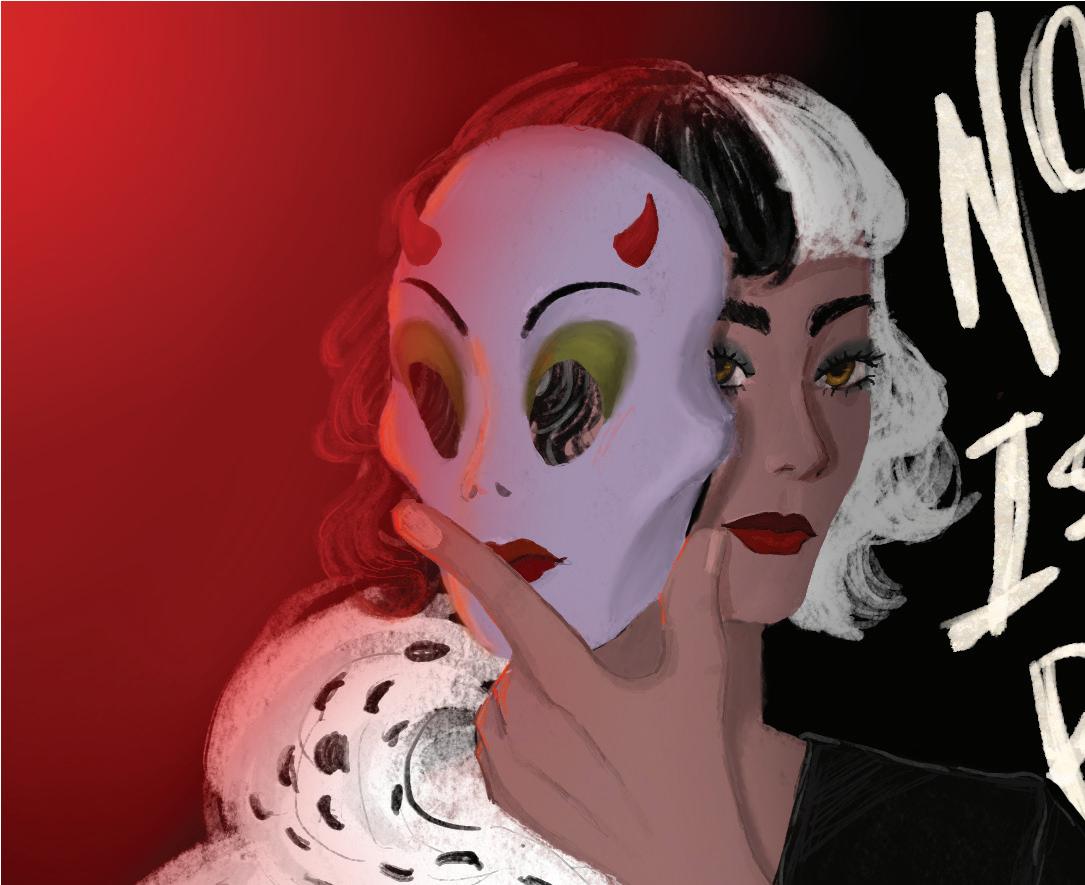
duced as a villain until the audience discovers his true backstory. In Mary Shelley’s “Frankenstein,” the monster appears as evil until we discover that he is stuck in a body he never wanted to be in. In the sequel to “Alice in Wonderland,” “Alice Through the Looking Glass,” viewers discover that the Queen of Hearts has been misunderstood — she wants nothing more than to be loved.
I fully believe that if every ctional villain were given a backstory, there would be no villains at all. It is safe to say that there are real-world villains, and my point is not to defend them. But it is so easy to label people as “good” or “bad,” when the

reality is that everyone is a mix of both and has a backstory you likely do not know about.
So, I believe it is important to stop characterizing people so concretely and instead go beyond the surface.
If we continued characterizing the Mali cents, Cruellas and Lokis of the world as the villains, we would be doing an injustice to both their characters and our principles. So, if we continue judging, mislabeling and resenting people we know, we are doing a disservice to them as well — for we do not know anything about their backstory.
Opinion by Ella Hughes & Dalia Sandberg
Illustration by Jennifer Lin
Gingers are hot-headed. Or witches. Or both.
At any moment, redheads might hop on a rainbow and y away with their pot of gold.
We have heard it all, from our classmates to random people walking on the street — as soon as they get a glimpse of our bright red hair, they share their favorite stereotype.
In solidarity with our fellow real-life gingers, we are here to set the record straight.








When it comes to redhead representation on TV and in movies, the ones we could think of o the top of our heads were the twin girls from “The Parent Trap,” Cheryl from “Riverdale,” Daphne from “Scooby-Doo,” Merida from “Brave” and the Weasleys from the Harry Potter universe.




Growing up, these were our favorite characters because we saw ourselves in them, but it put us into one box: we were quick-tempered, too emotional, sneaky and, allegedly, had no soul. Merida ts the “ ery” personality, but she is not the prototypically beautiful Disney princess. Cheryl is impulsive, the antagonist to Betty and Veronica, so she stands out from the rest. Ron Weasley is the Ed Sheeran of Hogwarts: emotional, jealous and dorky.










Hot take: Ariel the Little Mermaid is not a true ginger by popular standards, rocking more of a fake red tint.
The trend of redheads being stigmatized goes back a long time. In ancient Egypt, human sacri ces were o ered at the grave of Osiris, and the victims were often red-haired men. During the German witch trials in the 15th century, over 45,000 red-haired women are believed to have been burned alive. It’s even in the Bible – Judas, the disciple who betrayed Jesus to the Romans, is commonly depicted with red hair.
Even Apple made the redhead emoji one of the last of the hair colors to be included.
On Saint Patrick’s Day, some communities hold
a Ginger Run, but not all Irish people are redheads — and not all redheads are Irish. And while we appreciate some form of representation, and it is fun to be an honorary Irish person for a day, not everyone wants to run.
The fashion world tells us not to wear red or light pink, and our mothers always say that green looks good on us, but you’re not helping, mom! In addition, fake tans are frowned upon for redheads (we look like Oompa Loompas), and the more fashionable stores prefer styles for blondes and brunettes.
As a redhead, it’s easy to consider changing to t in with the crowd. After all, only 1–2% of the entire world has red hair. All our friends growing up had brown, black or blonde hair. As redheads, we have had moments of weakness when we contemplated whether or not to dye our hair, but we believed the people who told us that others would pay thousands to have our hair color.
You think Emma Stone is a redhead? Nope, dye job. Chappell Roan? Fake. Sophie Turner? Blonde. But sometimes, we were jealous of our friends who we saw dying and highlighting their hair and found ourselves wishing to change it more and more. We felt left out, so we absorbed those stereotypes. It was only when we were older that we truly embraced our inner ginger. Like our blessed hero Sadie Sink says in “Stranger Things,” “We make our own rules.”
Believe it or not, redheads have souls and real feelings, too. So the next time you think about putting us all in the same category, watch your back. These hot-headed witches will steal your soul and eat it with a bowl of Lucky Charms.

Opinion by Yutia Li
Illustration by Emily Yen

Since arriving at St. John’s in sixth grade, I’ve committed myself to a simple motto:
“Nobody cares. Work harder.”
Bad grade on a test? I’d study twice as hard for the next one. Struck out too many times in a softball tournament? I’d take extra swings in the batting cage. Working harder was my answer to everything. Until it wasn’t.








she de ned as “passion and perseverance for very long-term goals.” Duckworth concluded that grit was often equally, if not more, instrumental in determining one’s success than innate talent.
While grit is undeniably a central component for success, problems arise when we start believing that hard work will magically translate to better grades or All-SPC honors.




Aila Jiang
Monistere, Dalia Sandberg, Katharine Yao


Modern World History was the breaking point.








After a poor performance on my rst test last semester, I followed my mantra by religiously preparing for the second one. I sat at my desk for hours until I couldn’t drill the content into my brain any more.

Somehow, I performed worse.
Ahead of the third and nal test, I attended tutorials. I committed myself to studying incrementally rather than cramming. I even rewrote my entire 20-page study guide by hand.
And I still managed to score even lower.
I just didn’t get it. On the way home from school, I complained to my mother about how I was working harder but somehow performing worse, and how my classmates who hadn’t put in as much time as me had received higher scores.
The famous 10,000-hour rule, popularized by author Malcolm Gladwell in his 2008 book “Outliers,” theorizes that it takes the accumulation of deliberate practice to achieve mastery. Yet many overlook the word “deliberate” and instead focus on the magical 10,000 hours — without regard for the quality of those hours put in. Psychologist Anders Ericsson, whose research lays the foundation for this rule, has tried to debunk this interpretation: “You don’t get bene ts from mechanical repetition but by adjusting your execution over and over to get closer to your goal.”
If keeping my head down and grinding was leading to worse results, maybe it was time to look up.
My mom simply shrugged and replied, “You probably need to work smarter instead.” We sat in silence for the rest of the ride.
If keeping my head down and grinding was leading to worse results, maybe it was time to look up.
From the tenets of Confucianism to the American Dream is the idea that anyone can achieve success if they work hard enough.
It’s a lie.
In 2006, psychologist Carol Dweck published Mindset: The New Psychology of Success, which demonstrated how intelligence and ability can be developed through hard work. Dweck’s studies revealed that children praised for their e ort were likely to have a growth mindset. Those praised for their intelligence developed a xed mindset, which led to a declining academic performance.
In the 2010s, psychologist Angela Duckworth built on Dweck’s work through her studies of grit, which
As the year draws to a close, take a step back. If you are preparing for nals and cannot get the information to stick after hours of reading the textbook, try ashcards. If something feels o during athletic practice, analyze some lm instead of repeating the same improper mechanics.
Ask for feedback. Re ect on areas for improvement. Instead of counting hours, make the hours count.
Last semester, to prepare for my history midterm, I spent less time memorizing my notes word-for-word and focused on how to apply the content instead. By creating concept maps, writing practice essays and asking my teacher for help, I made stronger connections between terms and objectives, which helped me formulate better arguments on my exam. Deliberate practice might look di erent for you, but the concept of quality over quantity remains the same. As the saying goes, insanity is doing the same thing over and over again and expecting di erent results. And working hard is crazy if we can’t adapt, learn and grow along the way.
Business/Production Manager Lex Langlais
Sta Isabella Adachi, Ainsley Bass, William Burger, Colin Caughran, Kenzie Chu, Khoi Chu, Rebekah Costa, Juliet Dow, Viv Fox, Sophia Giron, Melody Han, Maggie Hester, Angel Huang, Zain Imam, Drew Kalapatapu, Mikail Khan, Brian Kim, Sophia Kim, Nicholas Laskaris, William Liang, Emily Matthews-Ederington, Katelyn McCollum, Sarah Nguyen, Georgia Pulliam, Noa Shaw, Mabrey Stokes, Caroline Thompson, Horatio Wilcox, Evan Williams, Preston Wu, Wanya Zafar, Brayden Zhao
Advisers
David Nathan, Shelley Stein (‘88), Sam Abramson
Mission Statement
The Review strives to report on issues with integrity, recognize the assiduous e orts of all and serve as an engine of discourse within the St. John’s community.
Publication Info
We mail each issue of The Review, free of charge, to every Upper School household, with an additional 1,000 copies distributed on campus to our 709 students and 98 faculty.
Policies
The Review provides a forum for student writing and opinion. The opinions and sta editorials contained herein do not necessarily re ect the opinions of the Head of School of the Board of Trustees of St. John’s School. Sta editorials represent the opinion of the entire Editorial Board unless otherwise noted. Writers and photographers are credited with a byline. Corrections, when necessary, can be found on the editorial pages. Running an advertisement does not imply endorsment by the school.
Submission Guidlines
Letters to the editor and guest columns are encouraged but are subject to editing for clarity, space, accuracy and taste. On occasion, we publish letters anonymously. We reserve the right not to print letters. Letters and guest columns can be emailed to sjsreviewonline@gmail.com.
LETTER FROM THE EDITORS: LIFE MOVES PRETTY FAST

Lucy Walker broke her arm twice in sixth grade. First, when a skateboarding spill snapped her right wrist, and again while running for AOS in the 1,200-meter race at a track meet when an opponent from ROBS clipped her ankle while attempting to pass her.
The identity of the tripper remained unknown until the rst day of Review our freshman year when Lucy used the anecdote as a way to bond with fellow new sta er Amanda Brantley. When they watched the video of the incident, they realized… Amanda was the other runner.
It might be a physical representation of kinship like exchange student Noa Morte’s matching tattoo with her mother back home in Spain (pg. 11) or a third space like Slowpokes where we go to see our friends and, in theory, do homework (pg. 15) — we are all connected by an invisible string.
Unlikely connections, which are usually born of happenstance, remind us that we always have somebody in our corner. These chance encounters keep things interesting, especially when once-reliable social events like parties become increasingly micromanaged (pg. 8-9). Finding meaningful connections in unexpected places is one of the best parts of high school. Cherish it!
At The Review, we can’t help but be spontaneous. Our fondest memories are of silly stu : watching “Barbie Life in the Dreamhouse” on the
Promethean board after nishing an issue, making CapCut edits of sacred American monuments and desecrating the publications room furniture with stickers and labels. Whenever we pass by the comically large microwave (“MACROWAVE”), Mr. Nathan’s DVD player (“CAT”) or the labelmaker itself (“LABELMAKER: makes labels”), we know we have left our mark on this mostly prestigious organization. Even the ironically empty “Potty Word Jar” is a reminder of our time here. We feel connected by some cosmic force to the editors who rst made the space their own by labeling the door, “DOOR.”
We encourage you to embrace impishness and whimsy. Make your legacy one extended ad-lib. Establish nourishing and joyful relationships with all kinds of people — and lean on them. Know that you are cared for and respected and that you will be remembered for years to come. If you ever doubt the impact and in uence of the SJS community, look to the pages of The Review — heck, the Houston Chronicle or even the New York Times. People know us, so try getting to know them.
This might all sound naive. And yeah, maybe it is. To quote the king of goo ng o , Ferris Bueller: “It’s a little childish and stupid, but then again, so is high school.”










by Lucy Walker
